Yana Mann and Julián De La Chica LIVE at Carnegie Hall
In a sold out concert at Carnegie Hall’s Weill Auditorium, Dubai-based, Russian mezzo and producer Yana Mann dazzled in her highly-anticipated North American concert debut, with a velvety, clear, pure and deep voice. In the first half of the recital, Mann captivated the audience, offering a masterful performance of De La Chica's cycle Op. 12, Poemas de Bar, followed by the very emotive world premiere of De La Chica's Arias Florentinas Op. 15, dedicated to her, and commissioned by IGM for the occassion.
Highlights of the concert included a guest appearance of the American soprano Rachel Hippert, singing a duet with Yana; and as encore, Mann and De La Chica performed four hands, while Yana sang De La Chica's Mandala No. 1, text by Susan Campos Fonseca, which will be featured on Yana's upcoming album, Paisaje Nihilista.
Yana Mann wore custom designs from
Amber Feroz (India) and Obra Gris (Costa Rica)
Press & links of interest
Concert listed on Operawire
Concert listed on NewSounds
Article National News
Article Grammy Global Music
Album & Music:
Buy & Stream the album
Yana Mann &
Julián De La Chica
Photo by Fadi Kheir
Music Notes
Julián De La Chica is a 21st century composer.
by George Grella
We’re already two decades into this new era, but not everything in existence moves at the same pace — time keeps its own implacable rhythm, while people move quickly and traditions perhaps can lag a bit. For a composer who is rooted in the classical world but lives in this era, it means using musical tools and worldly subject matter that can still seem out of place in the Western art music tradition. As that tradition has become cloistered in the academy, especially since WWII, it must rely on composers in the streets to expand it’s horizons. And De La Chica, even with a resume that includes the usual traditional training, is very much a composer of life in the streets. That’s what this concert is all about.
Information technology gives us unprecedented access to the storehouse of human knowledge, but it can’t replace experience. The music heard tonight is not just shaped by De La Chica’s lived experiences — by merely being human, all artists shape their work into a form related to their own lives — but comes immediately from his social life and travels, from being aware of other people and attentive to his surroundings, remembering, taking notes on things that quite literally spoke to him, and turning those into the notes heard during this concert.
Yana Mann
Photo by Fadi Kheir
He also had some drinking money, and found a favorite place in Brooklyn where the bartender—a bass player—was friendly to him and introduced him to “all the good jazz and soul, it was a masterclass, everything with a bottle of scotch.” When the bartender wasn’t working, De La Chica was “listening to plenty of stories” from the other patrons, “stories about New York people, love, suicide, money, the human complex.” Out all night, he would take thetrain home early the next morning, thinking about these stories.
He wrote these down and refined them into the Spanish verse heard in the music tonight: elegant, concise but shapely, rich with feeling. The 10 Poemas, by their nature, are stories that come from lonely people, recorded and transformed by an artist who himself was living through the classic existence of isolation while being surrounded by millions of people in dense quarters.
Yana Mann &
Julián De La Chica
Photo by Fadi Kheir
The text was shaped to De La Chica’s style, which generally uses minimal material and uses insistence to develop an emotional richness. His previous composing has already explored the depths of the psyche in ways that are both beautiful but also startlingly dark. But it’s not darkness for darkness’ sake, a mere gesture—De La Chica is a contemporary composer, of the moment, and has an appreciation for the musical and expressive possibilities of processed, electronic sounds and timbres, placed into the types of structures and forms that have endured through centuries of Western art music history.
The result is a human connection, familiar shapes but new sounds. And with the bar stories coming through the voice, a feeling of duende that is something beyond genres and styles, just De La Chica’s own compositional voice. Tonight, that’s inseparable from the clarity and color of Yana Mann’s singing. She is both an excellent interpreter of the Poemas, and the dedicatee of the Arias.
Yana Mann &
Julián De La Chica
Photo by Fadi Kheir
The two met through filmmaker for whom De La Chica had composed a soundtrack. The filmmaker, a classical music fan with a passion for new and contemporary music, knew Mann was preparing a piece by Handel and mentioned that she should meet De La Chica. The singer was interested in “doing something fresh,” says De La Chica, and found some of the composer’s music on YouTube (a video of soprano Rachel Hippert singing his Gesegnete Dunkelheit, a song cycle for soprano, piano, and synthesizer), and “she says she was in love with the music,” and asked if he could write some new music for her.
De La Chica did so with the Arias, but first there were the Poemas de bar. He had “put them away in a box, waiting for the right singer,” and when Mann contacted him, he told her, “I think I have something that is perfect for you."The composer’s work can be challenging for singers who are mainly familiar with the traditional repertoire, but Mann had both the technique and outlook for the songs. “Yana felt the connection to the story from the beginning,” he says, and “had the vision to see through the score, and she saw the potential and beauty of the cycle.” So much so that she recorded the complete song cycle and released it as her first studio album (11 Poemas de Bar, Op. 12, IGM-2021). "It was like the music was waiting for her... You never know, maybe I wrote it for her many years ago, before I met her,” the composer muses, “it’s the magic of music.”
Yana Mann,
Rachel Hippert &
Julián De La Chica
Photo by Fadi Kheir
The Arias began with a month De La Chica spent in Italy in the summer of 2021. There, walking the streets, he saw a poster announcing a vocal recital in what he describes as “a very old chapel,” and which was the first public concert he saw since the beginning of the pandemic.
“Maybe it was the ambience of the chapel, the city, and the Italian arias that gave me inspiration for the cycle,” he says. And the 10 Poemas became a model for the new music. “Because the Poemas were conversations in a bar,”De La Chica explains, “I decided to capture everyday conversations in Florence. I ‘stole’ some stories — for example, when I was on line to buy tickets for the Campanile, or in a coffee shop,” he would note bits of conversations he overheard. He tells one story about this: “I still rememberaround 2 a.m., there was one guy sitting on a bridge over the Arno. I think hewas drunk.” De La Chica heard him saying to passersby, “look at the light of the river.” The composer thought the man was trying to jump, an experience he describes as “a little scary.”
Yana Mann &
Julián De La Chica
Photo by Fadi Kheir
De La Chica again took that every day life in society, in the streets, and adapted it into what he describes as “classic” Spanish, “trying to explore the old Italian/Florentine dialect in its sound and form.” These happenstance source for text, specifically non-poetic ones, are very much part of contemporary sensibilities, shaped since WWII by vernacular language and, at least subliminally, J.G. Ballard’s idea that the everyday words of commerce and society are the literature of the future. That this idea, which is decades old, perhaps remains new because the future is always just out of reach. But for the now, we have the sounds of Julián De La Chica.
George Grella is a composer, musician and critic. He's played CBGB and Carnegie Hall, is Music Editor at theBrooklyn Rail and a freelance critic at the New York Classical Review. He’s contributed to the GroveDictionary of American Music and Musicians, The Wire, Downbeat, Bandcamp, NewMusicBox, AmericanRecord Guide, Playbill, Sequenza21, the Centre Canadien D’Architecture, Signal to Noise, Time Out New York,ClassicalTV, and others.
Yana Mann &
Julián De La Chica
Photo by Fadi Kheir
Gallery
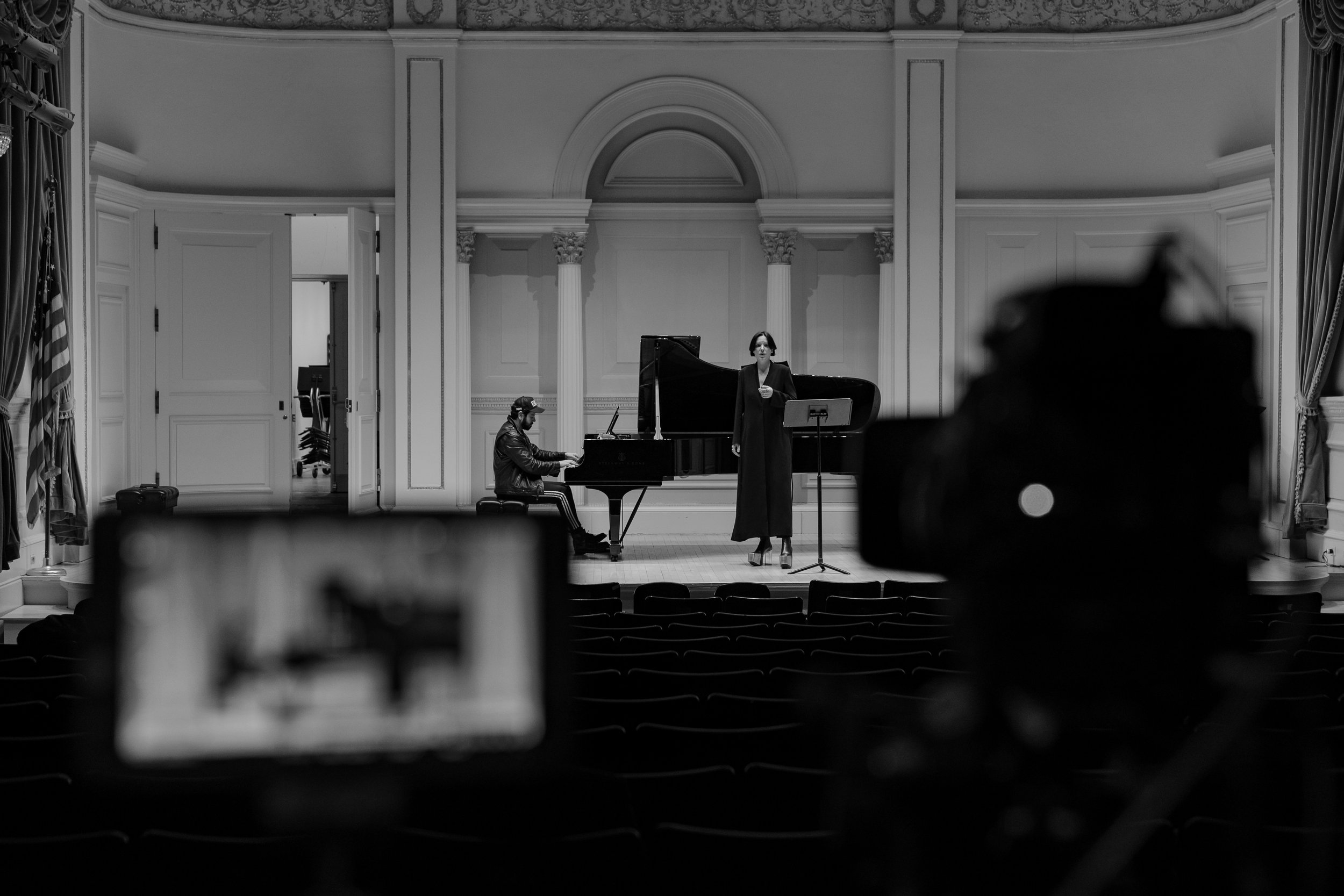
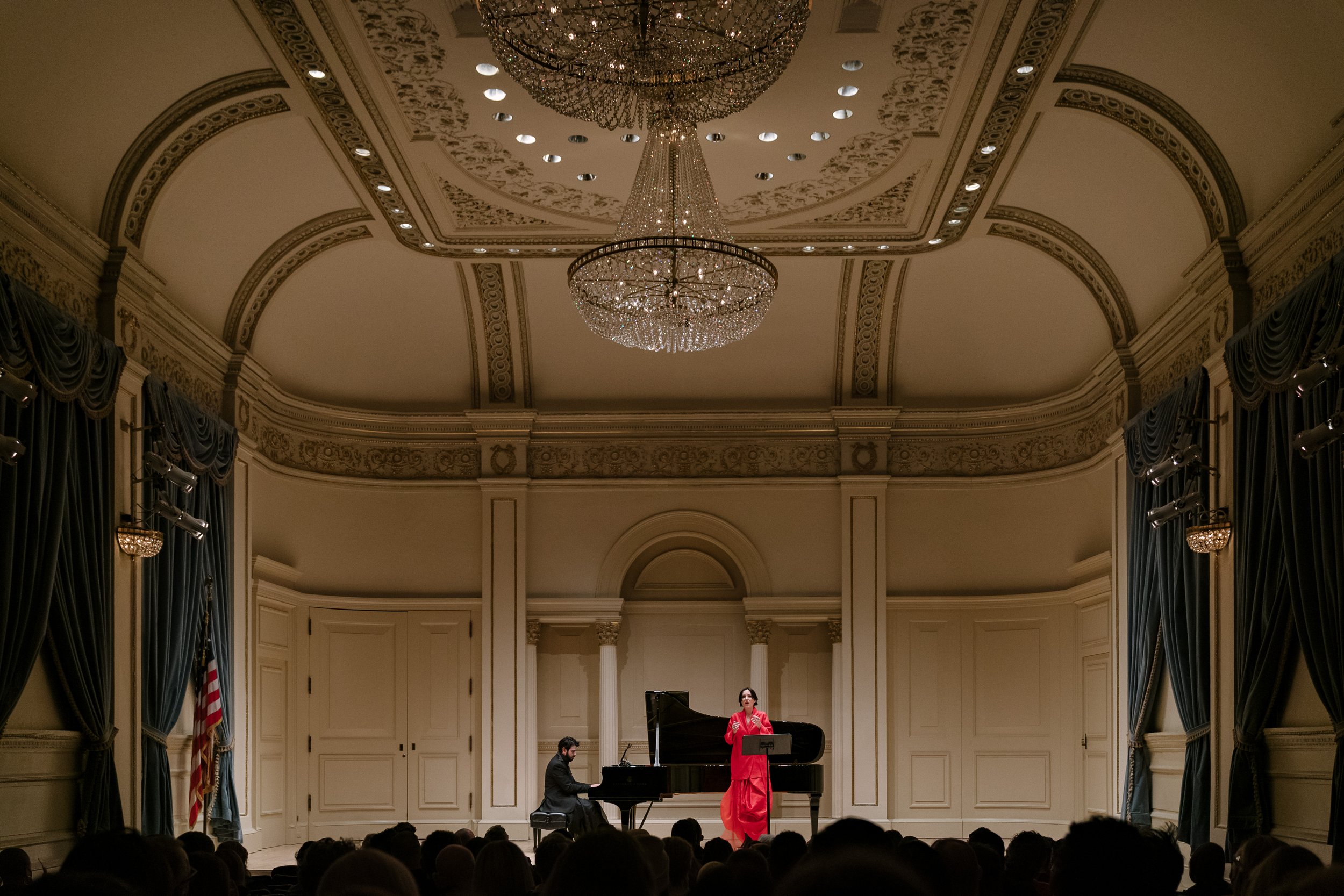

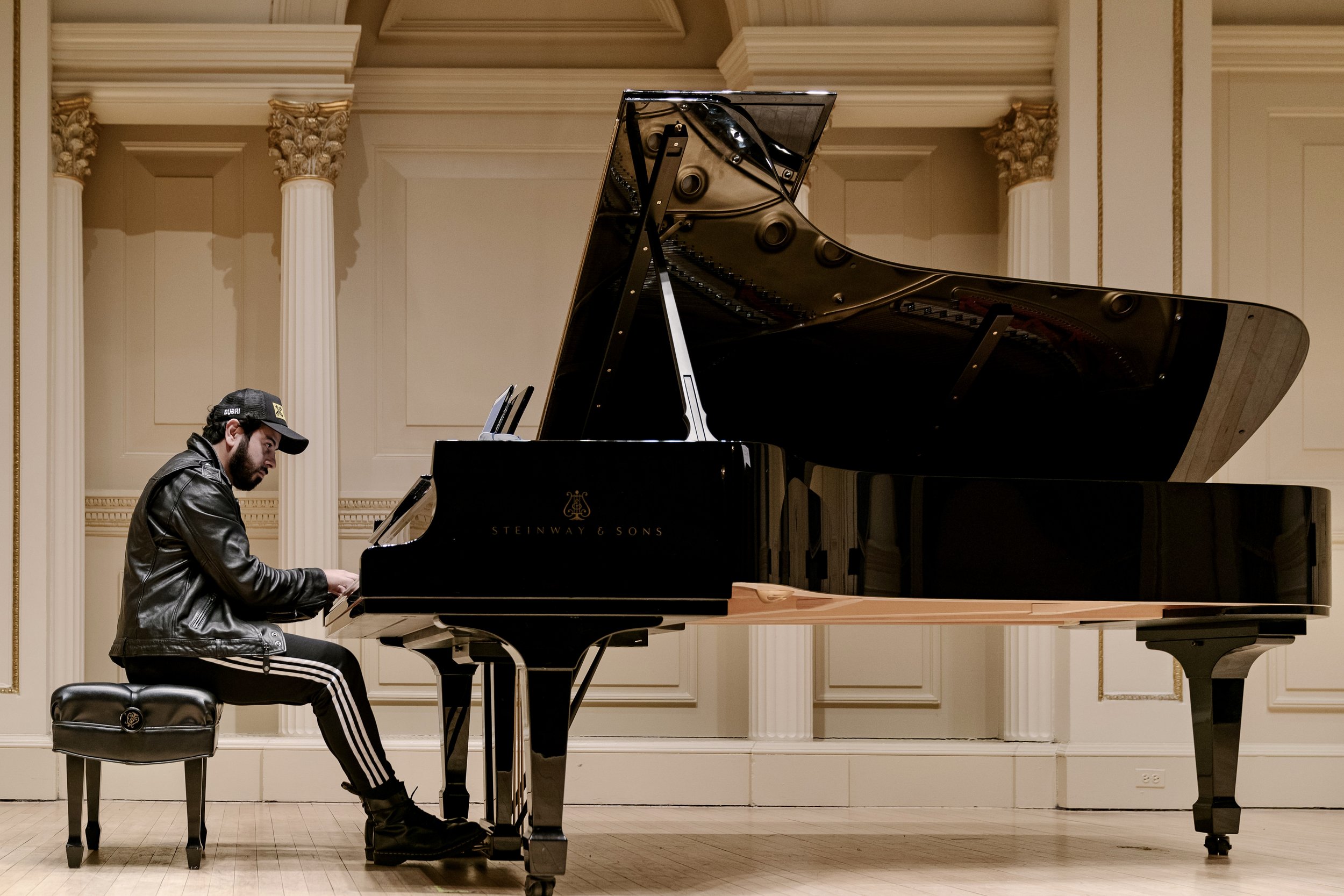
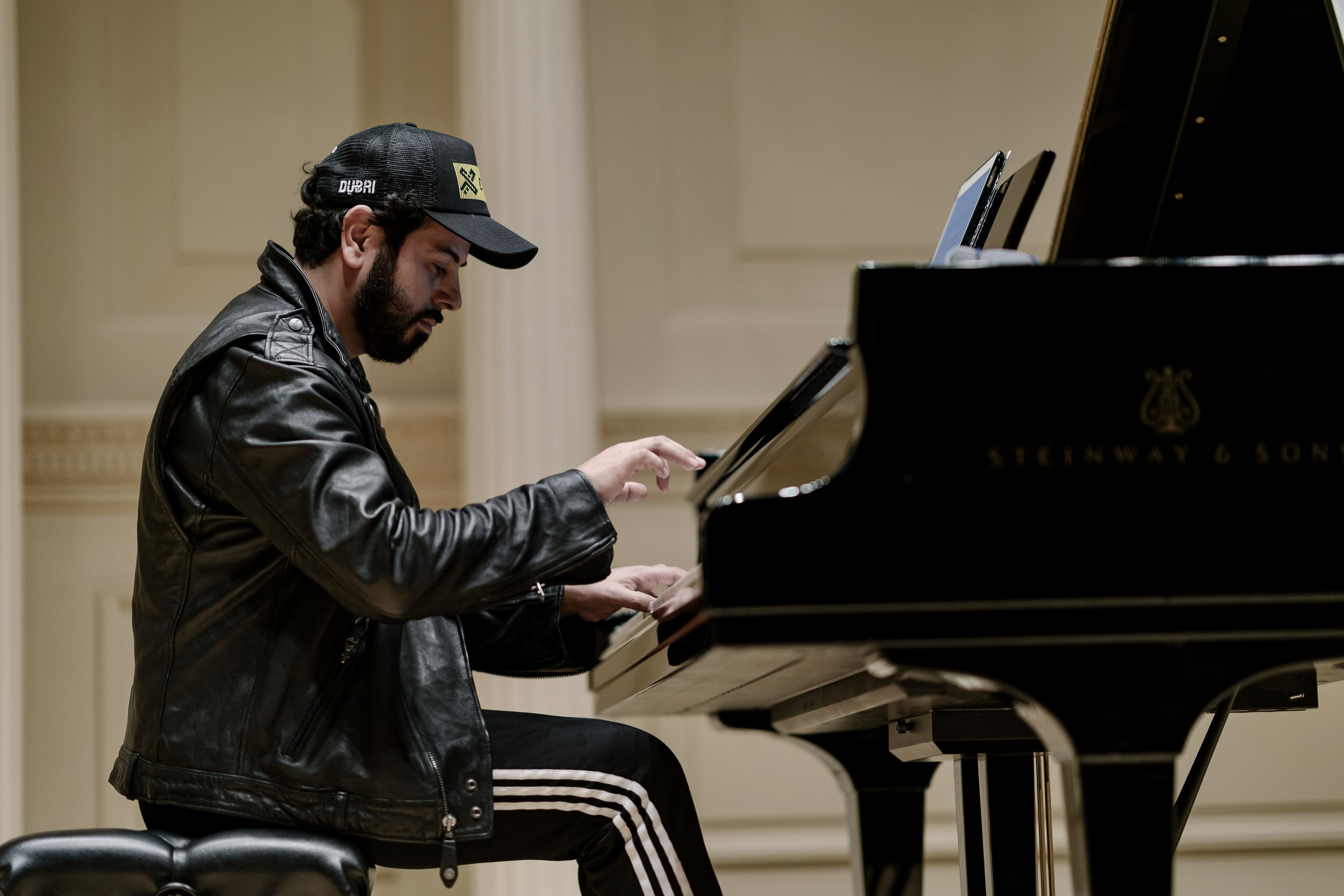
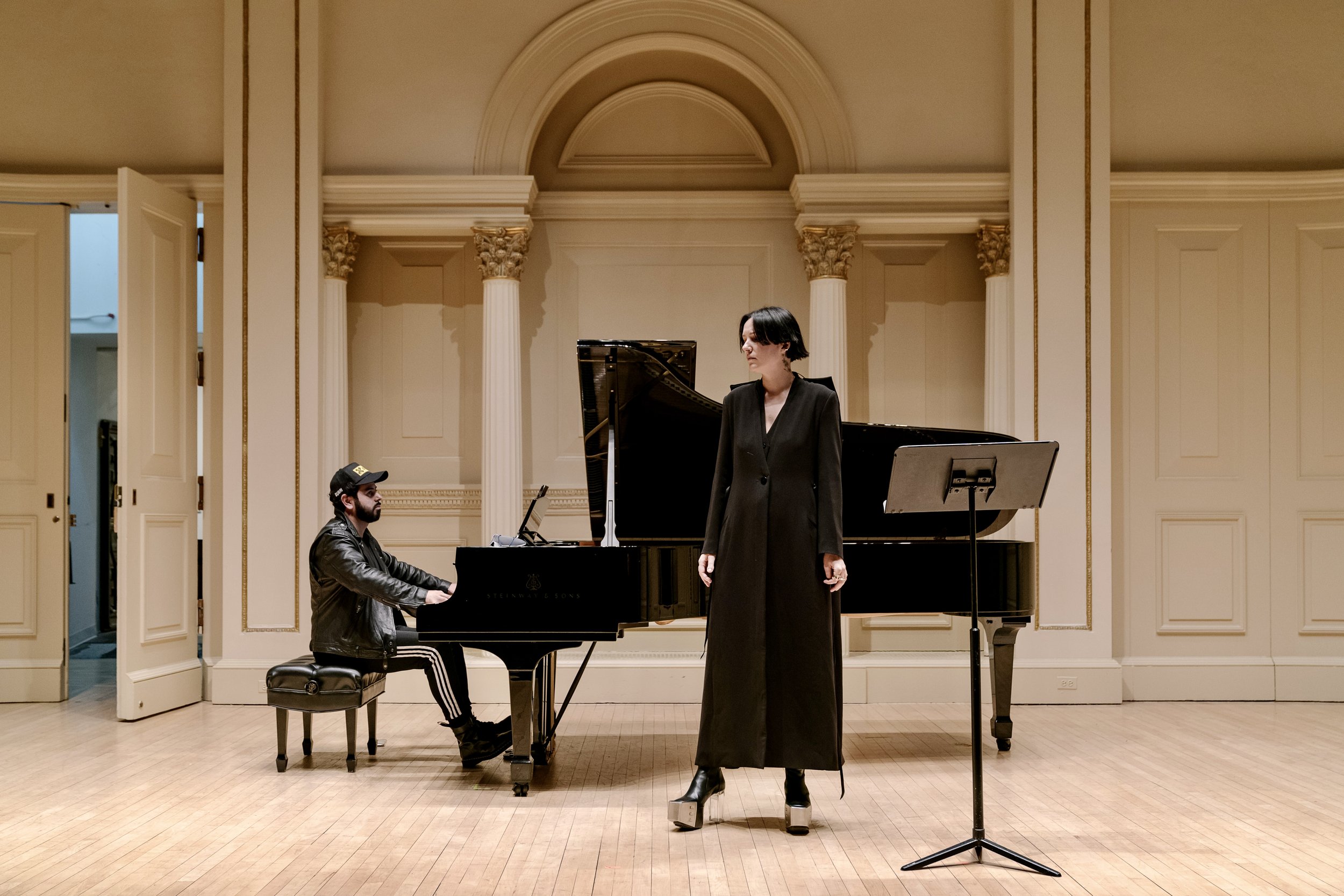
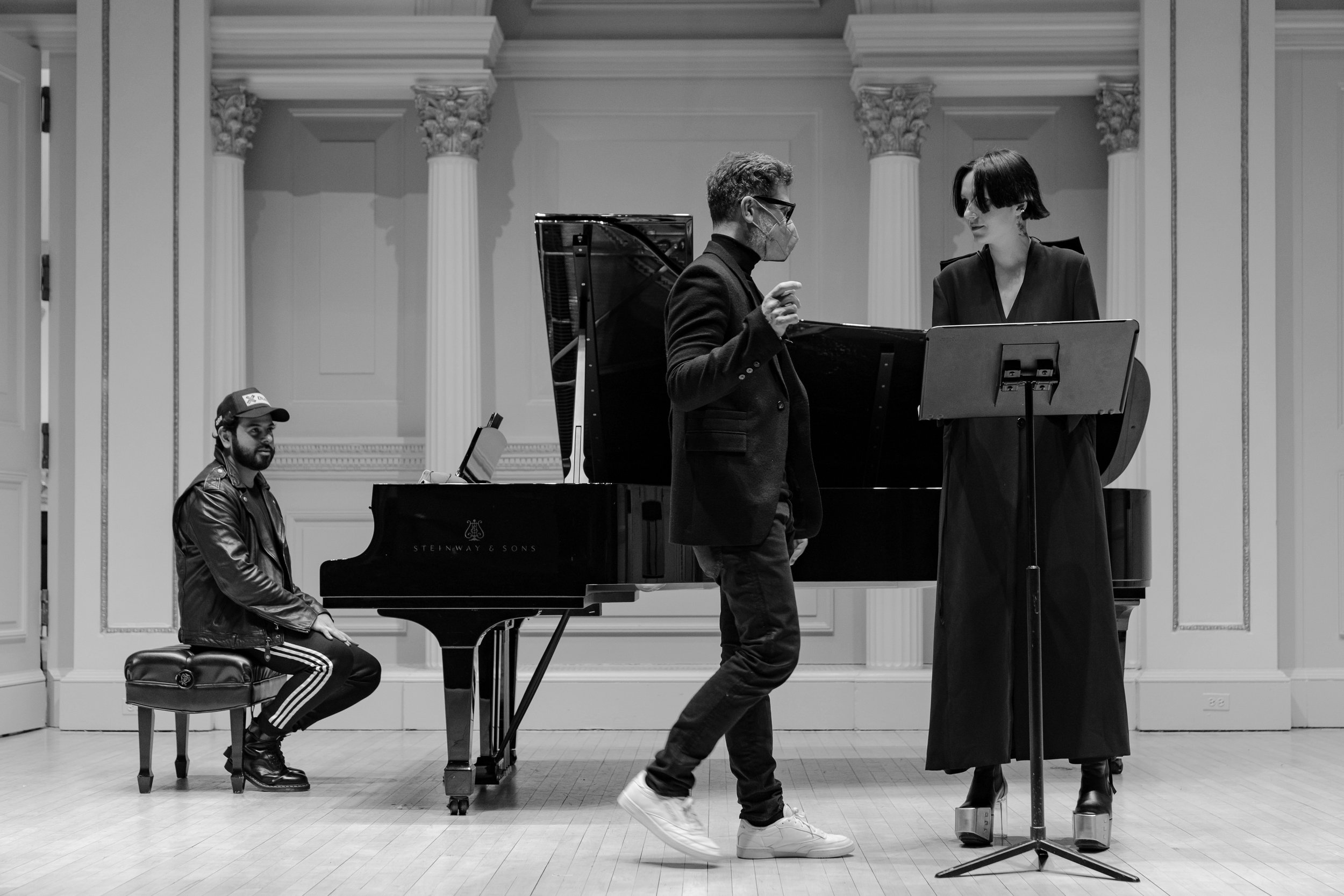
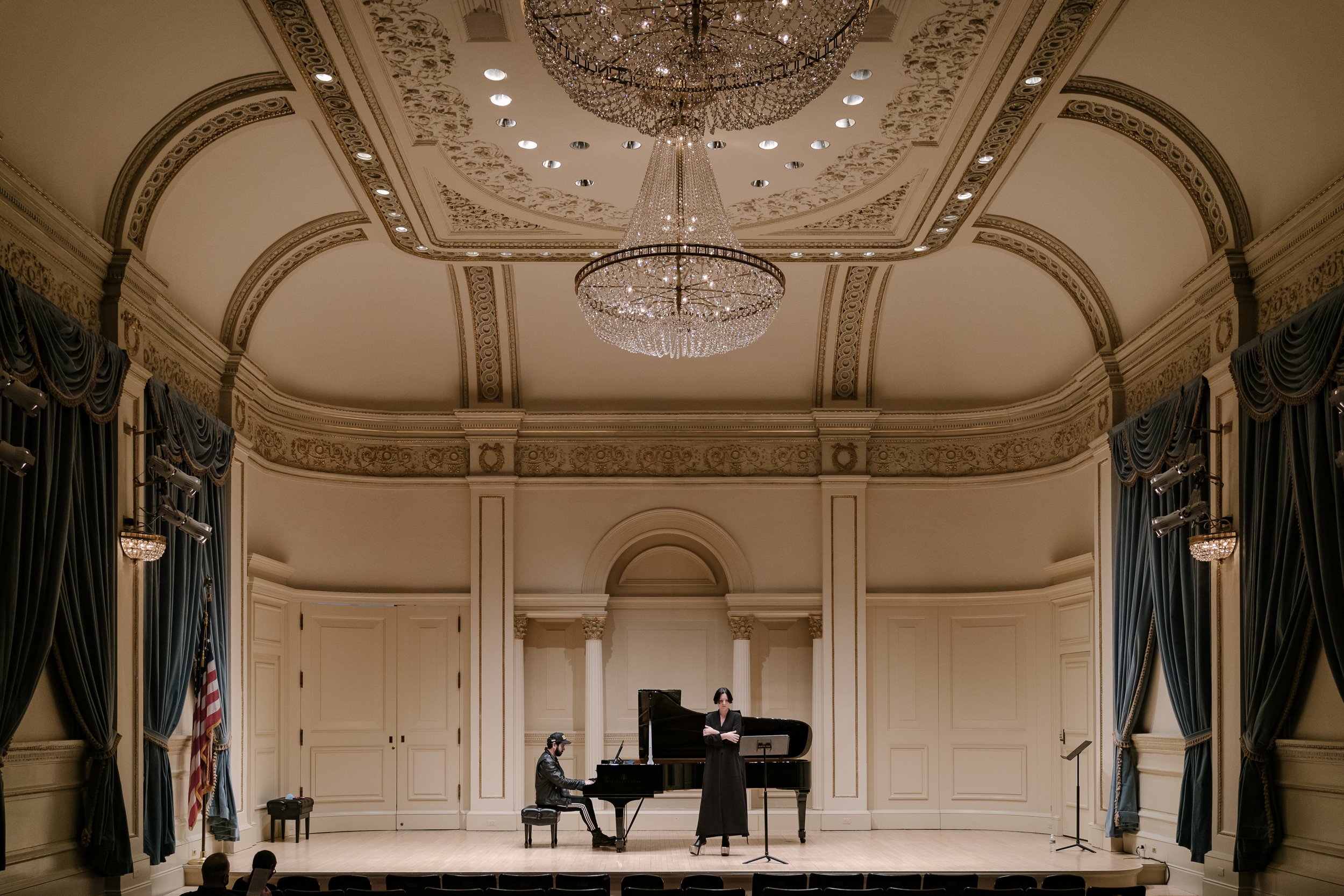

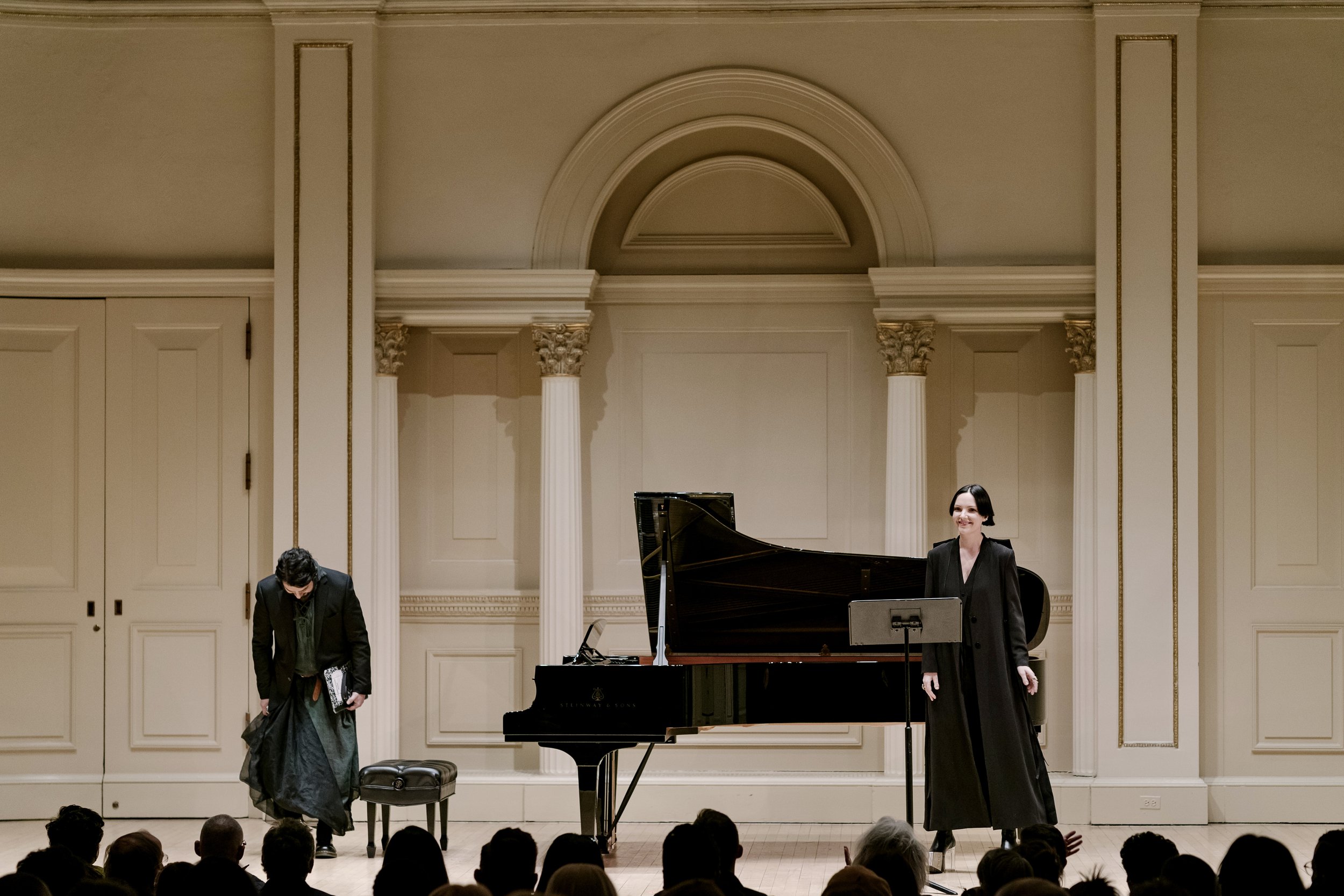
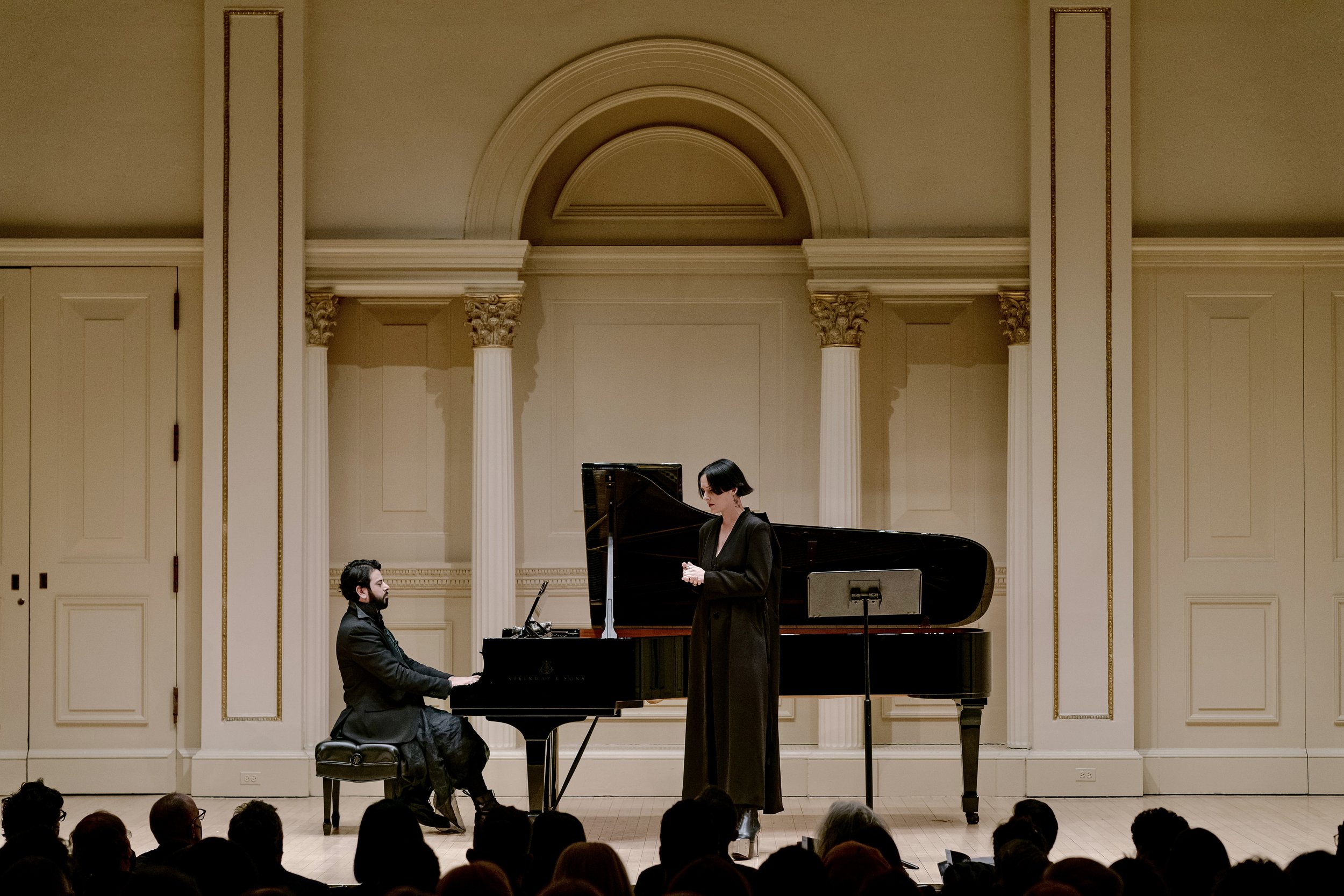
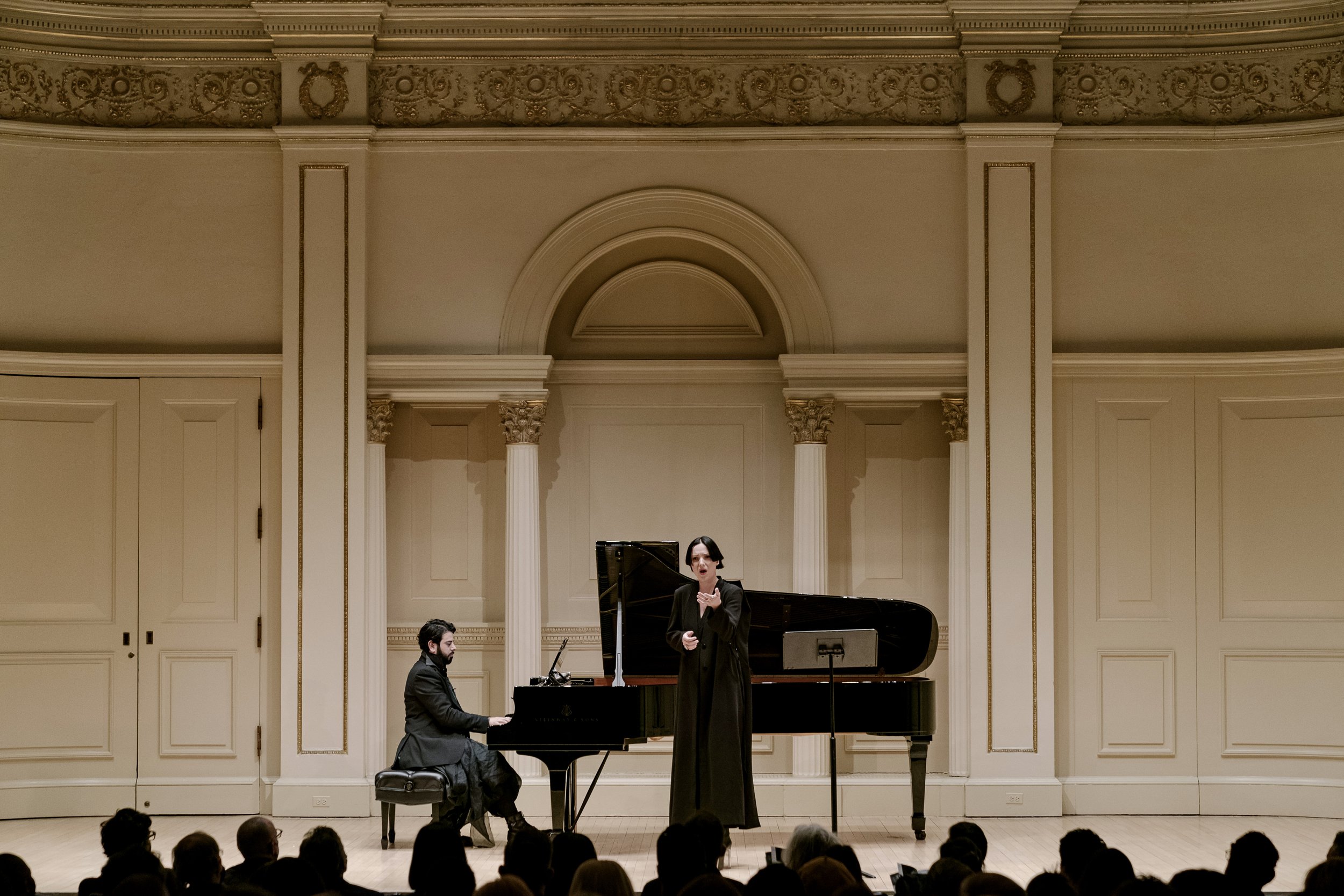
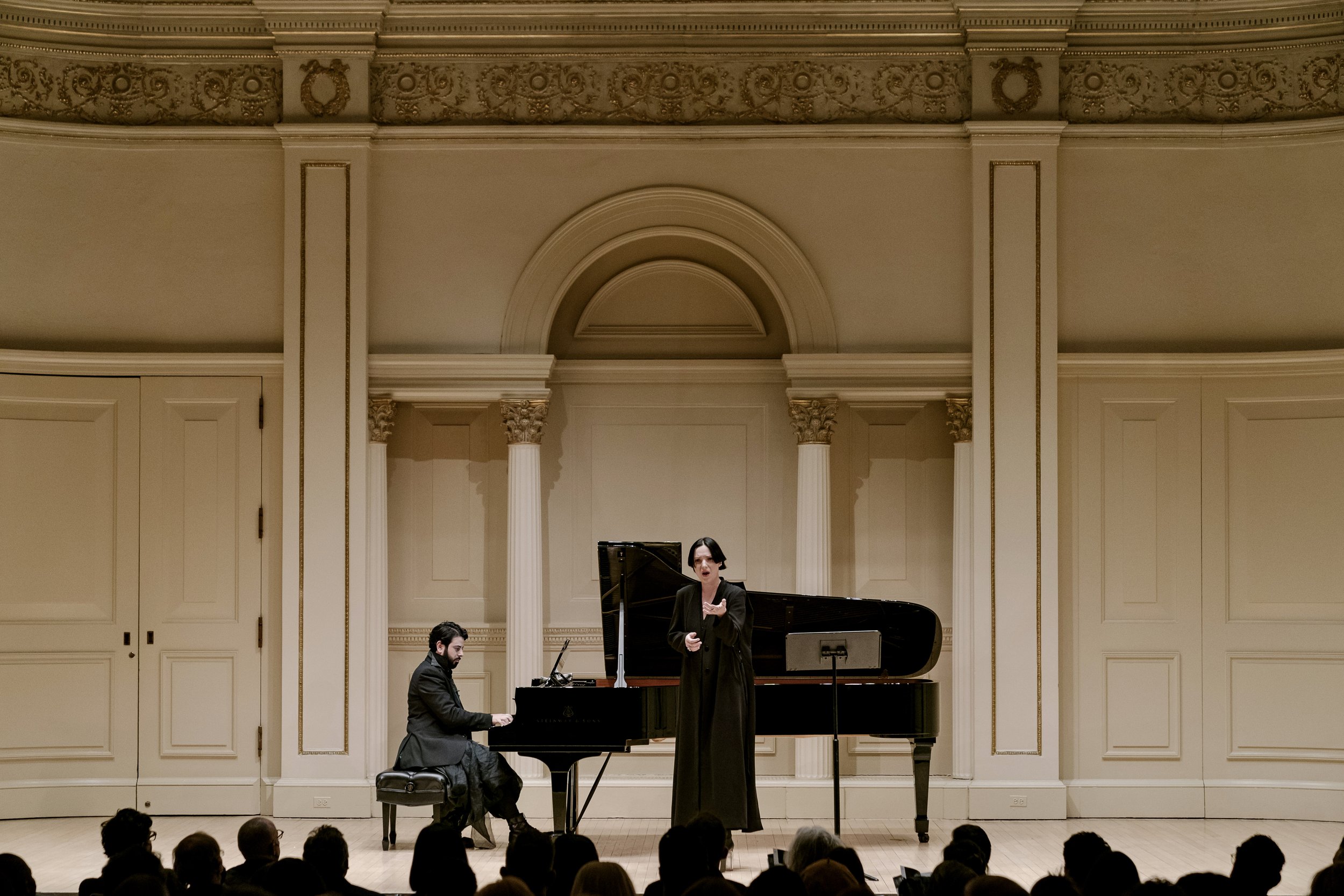
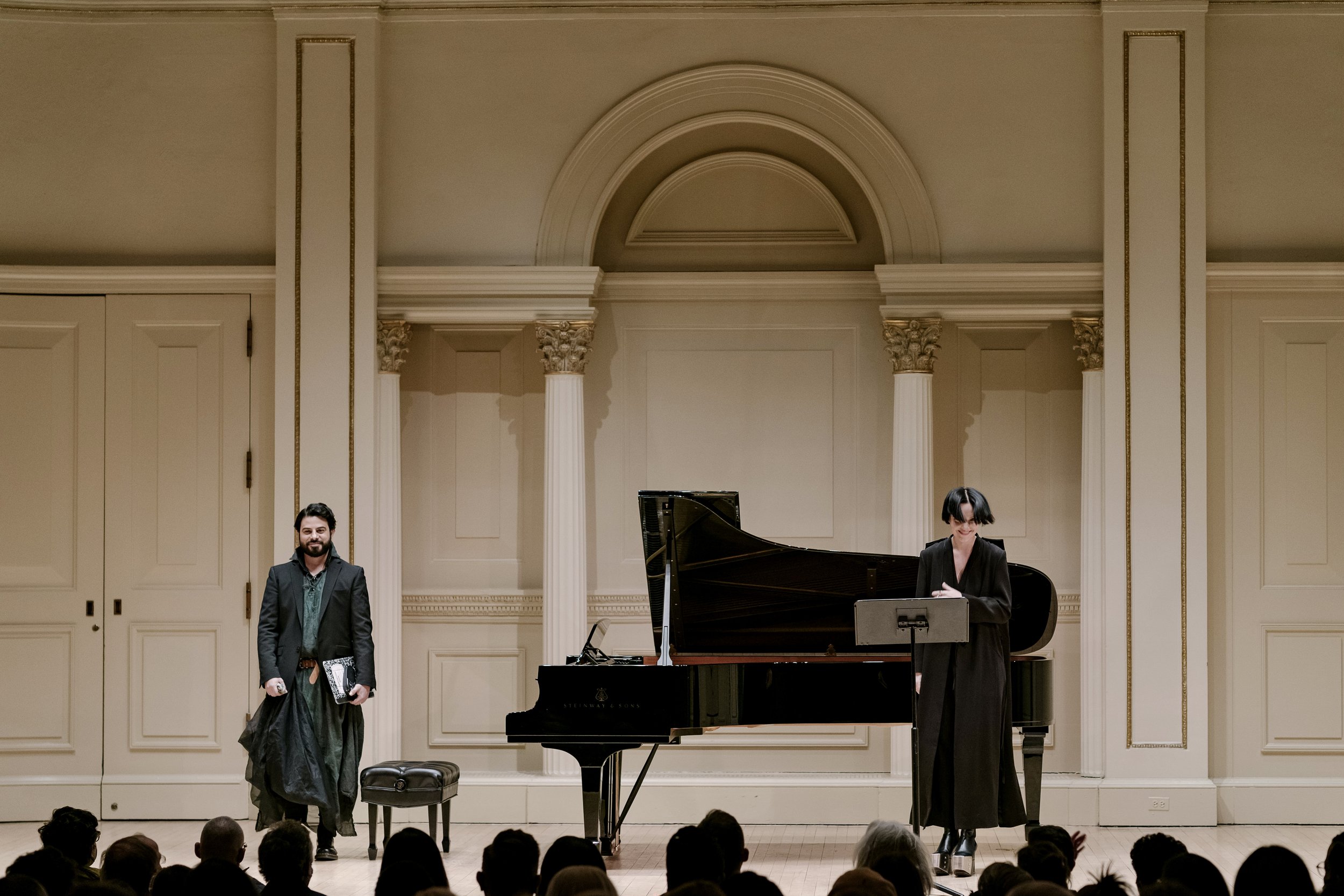
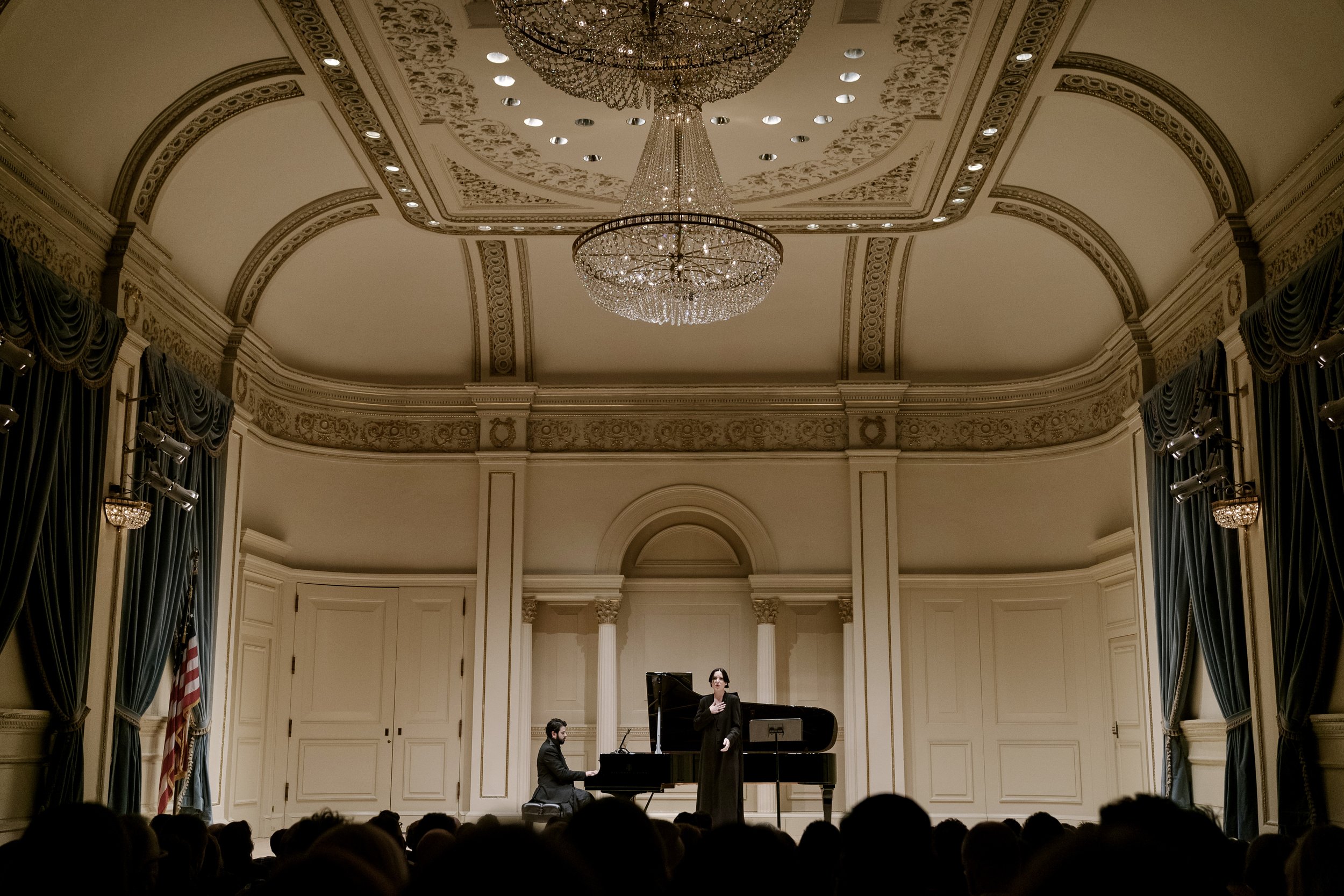
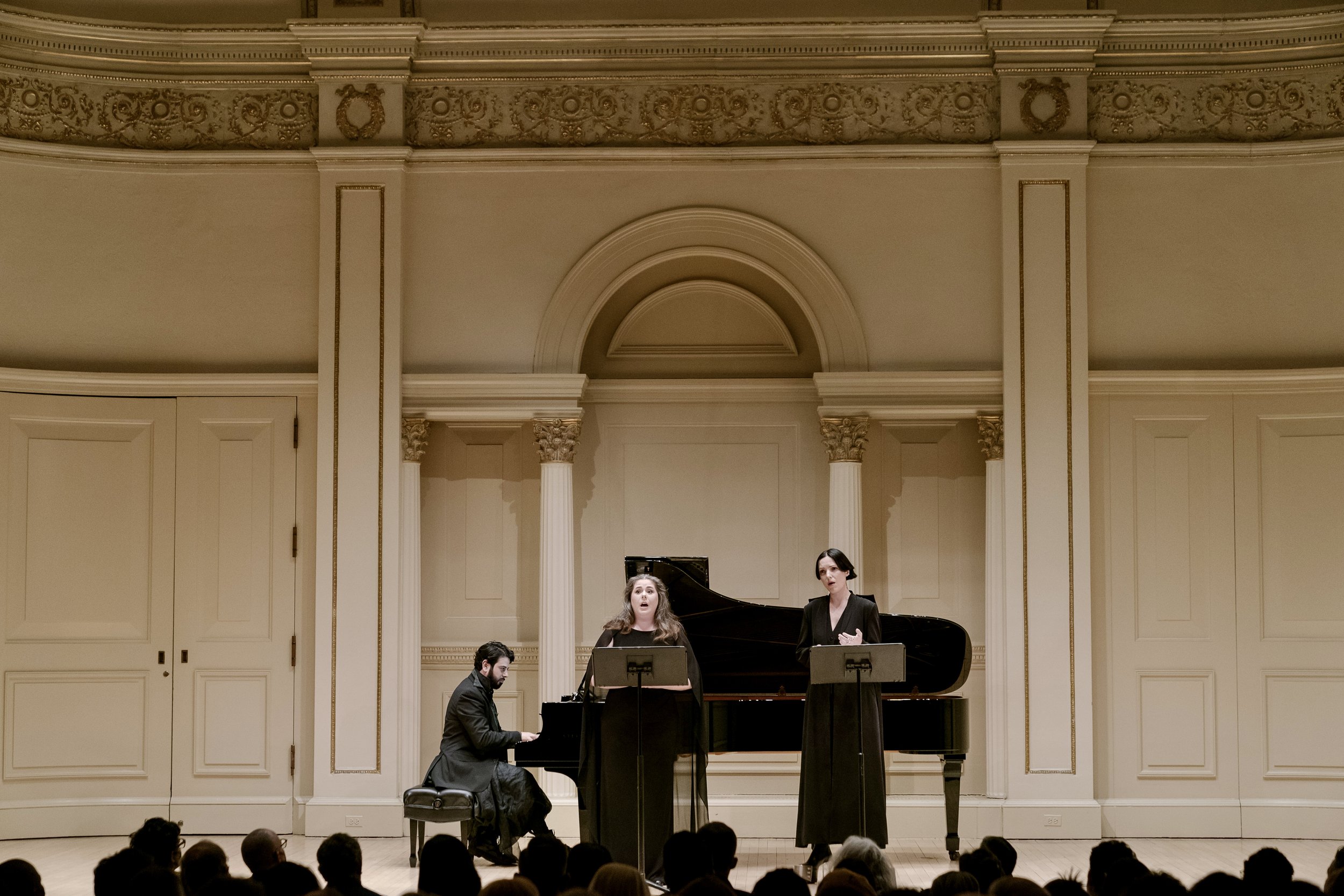
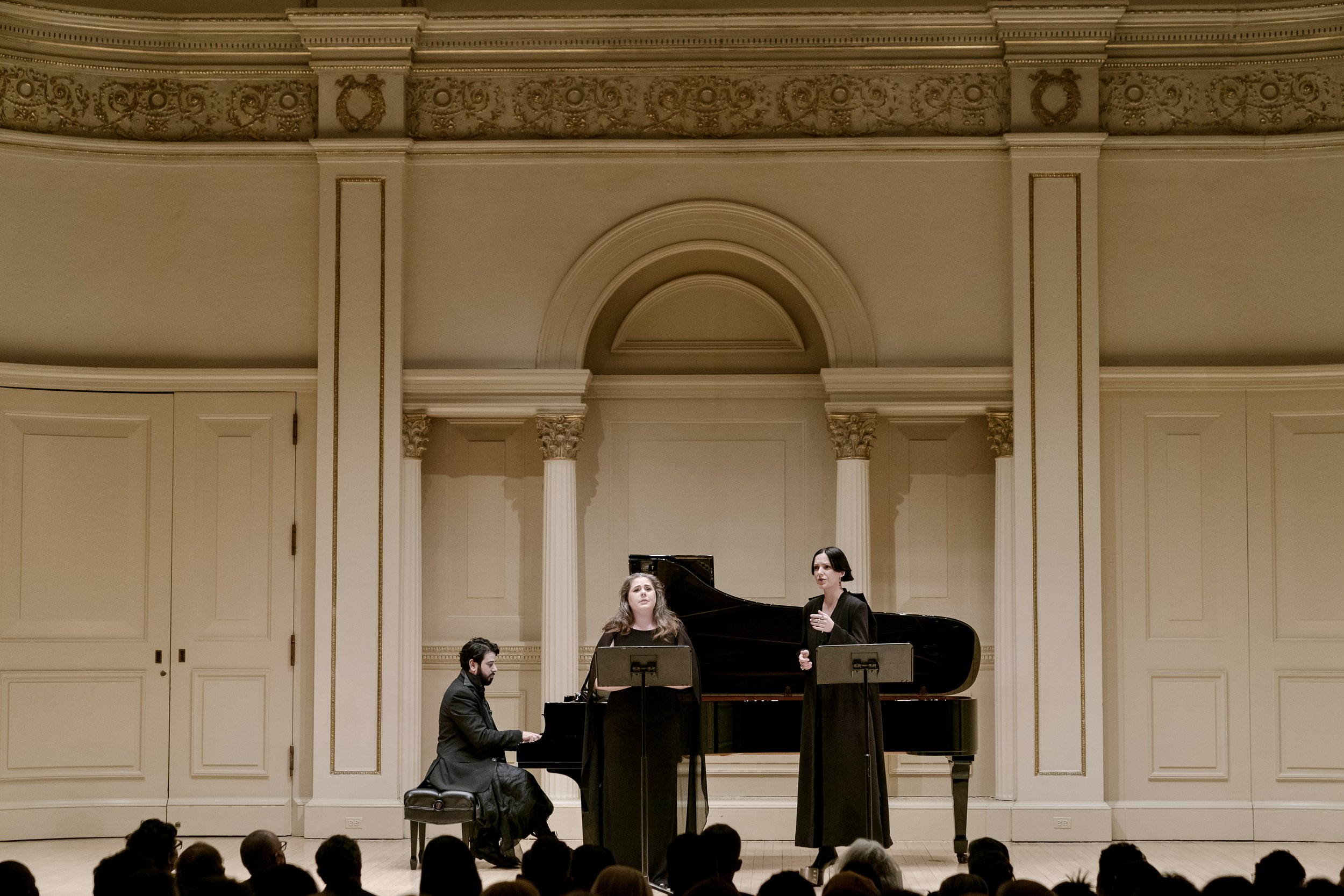
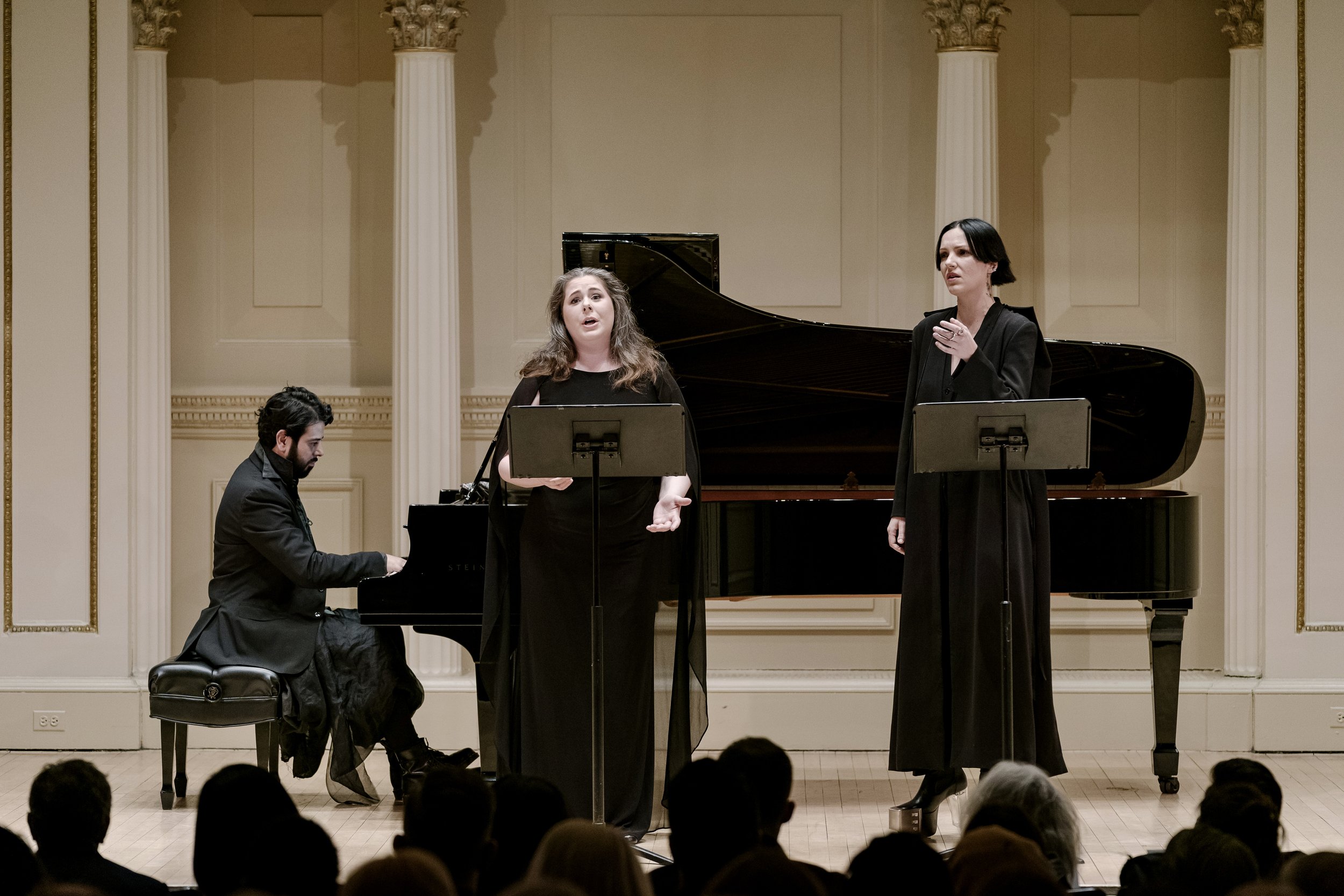
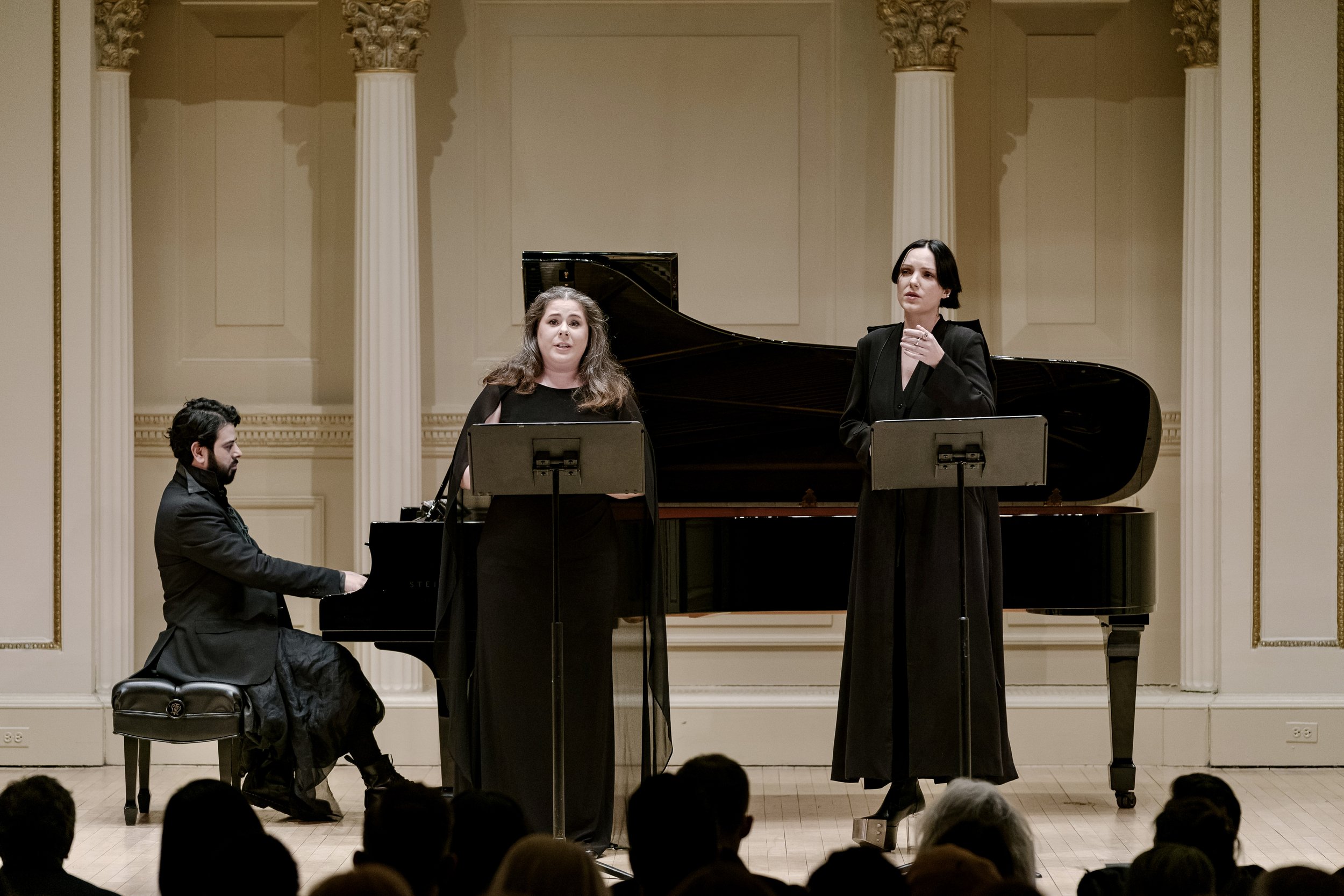
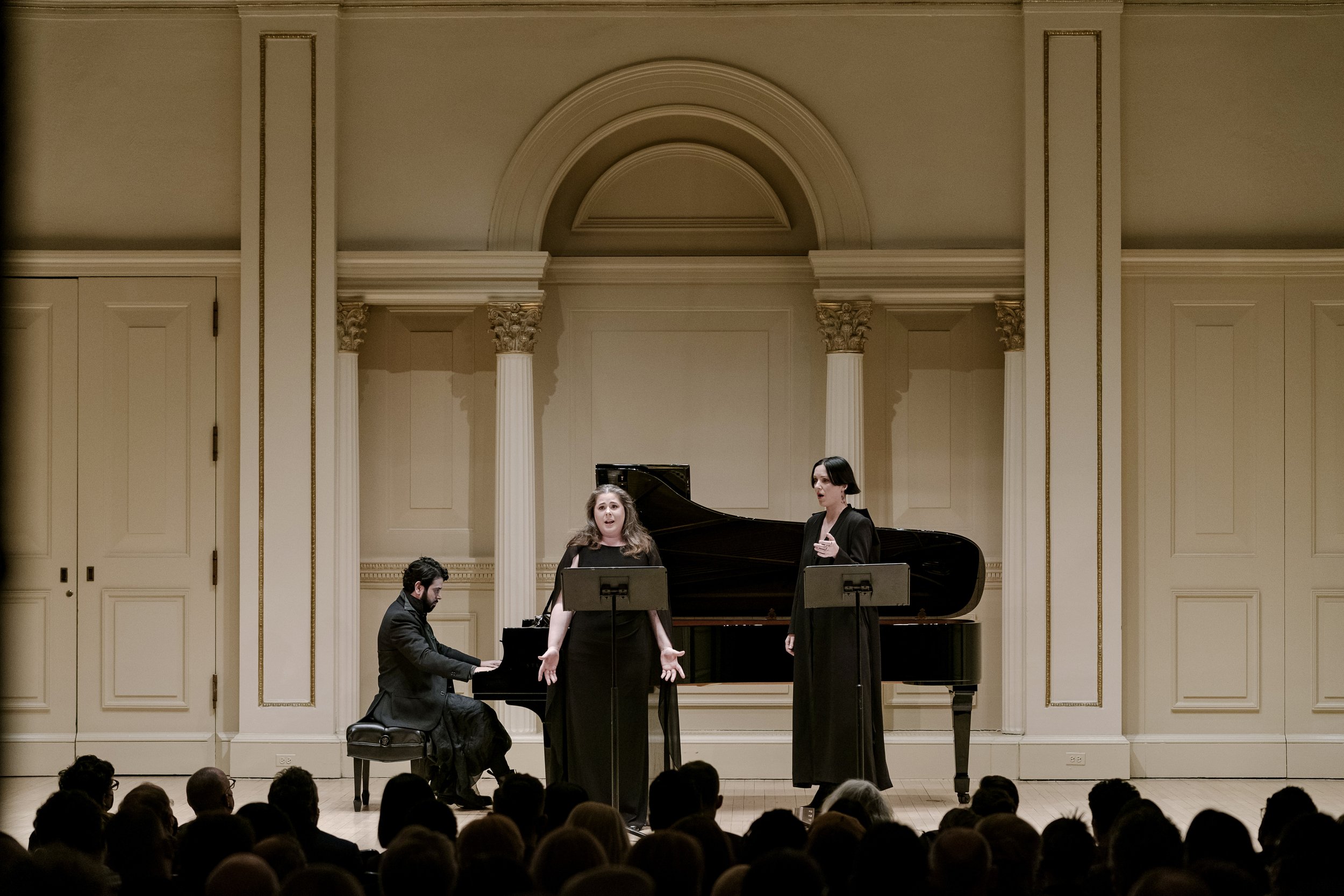
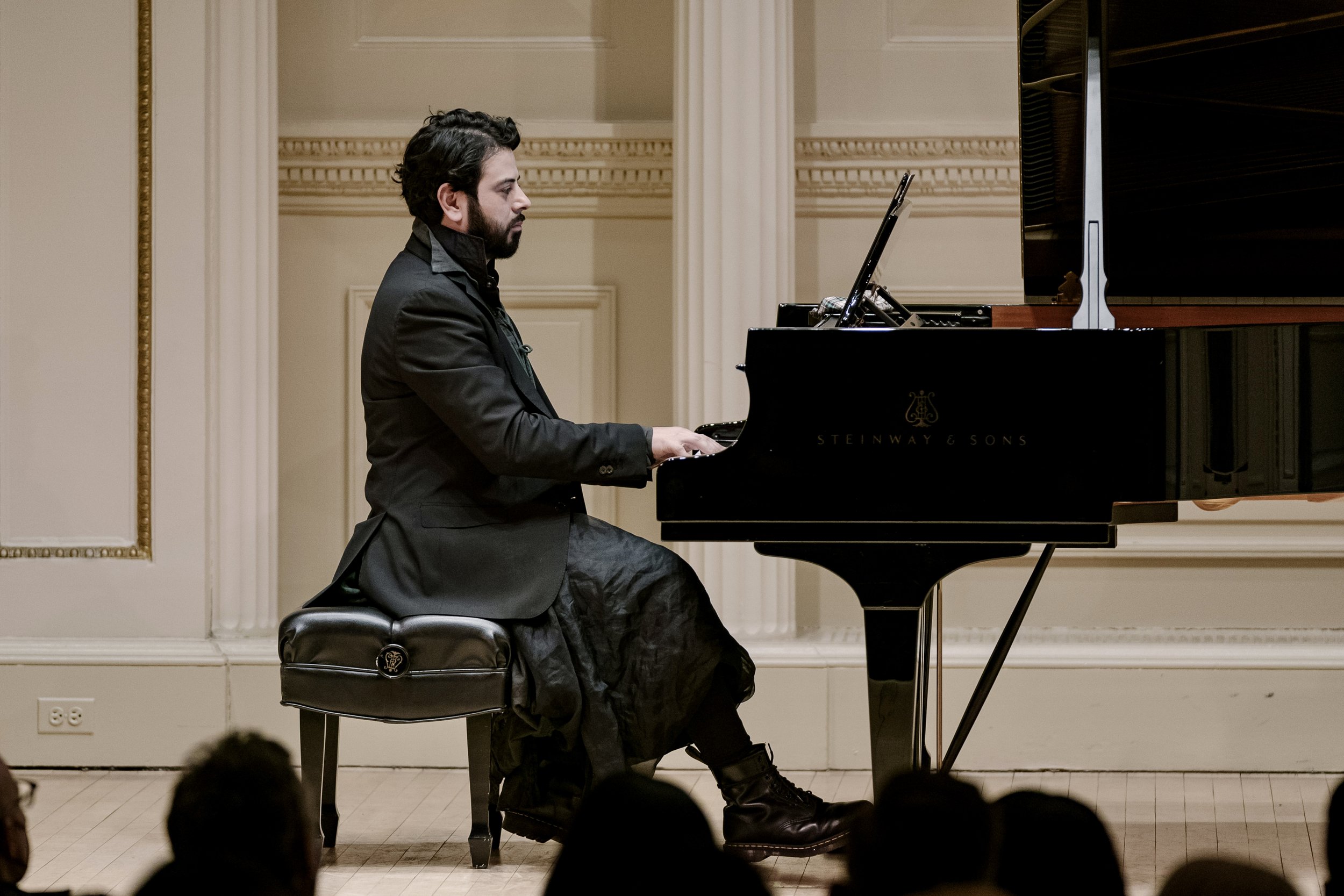
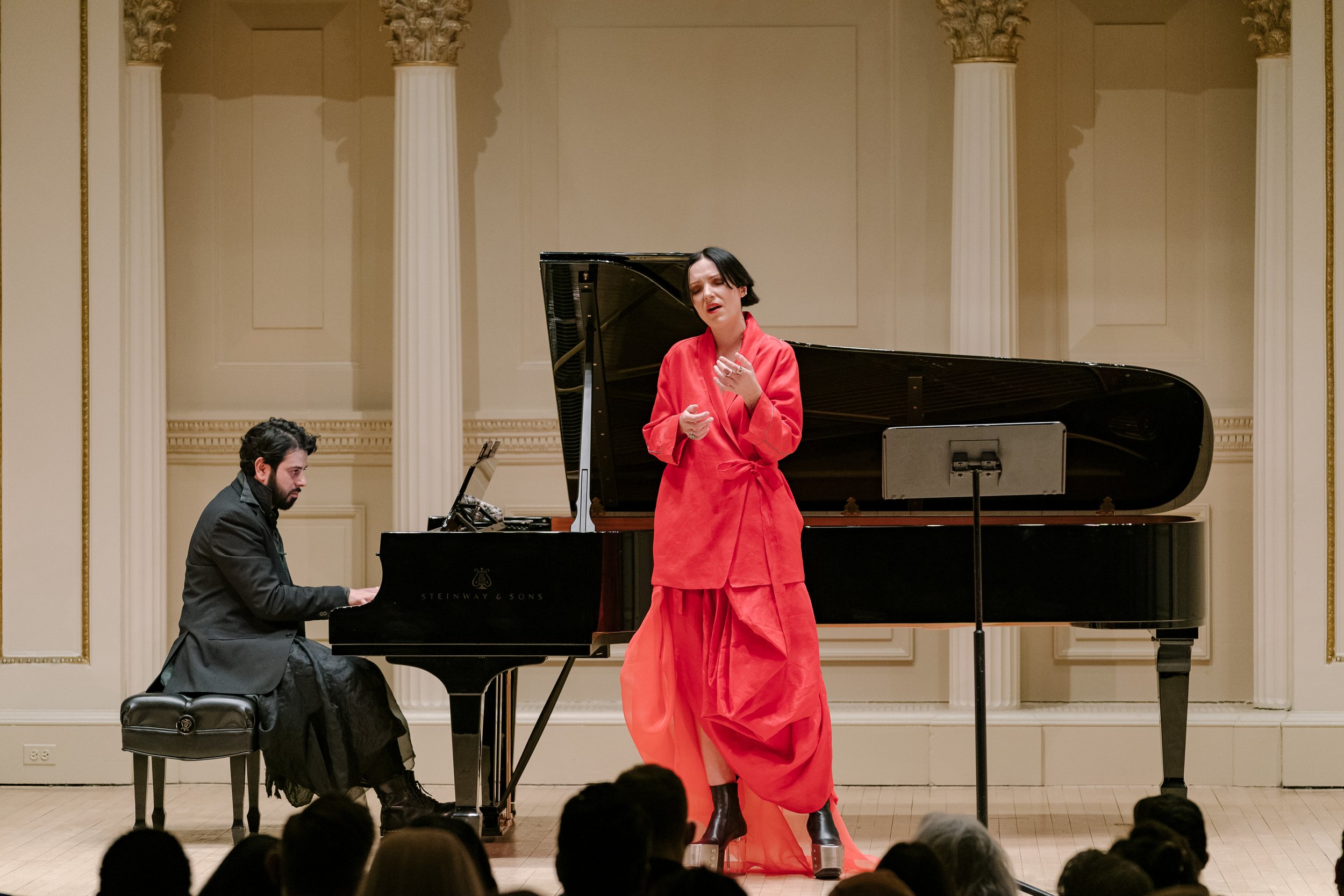
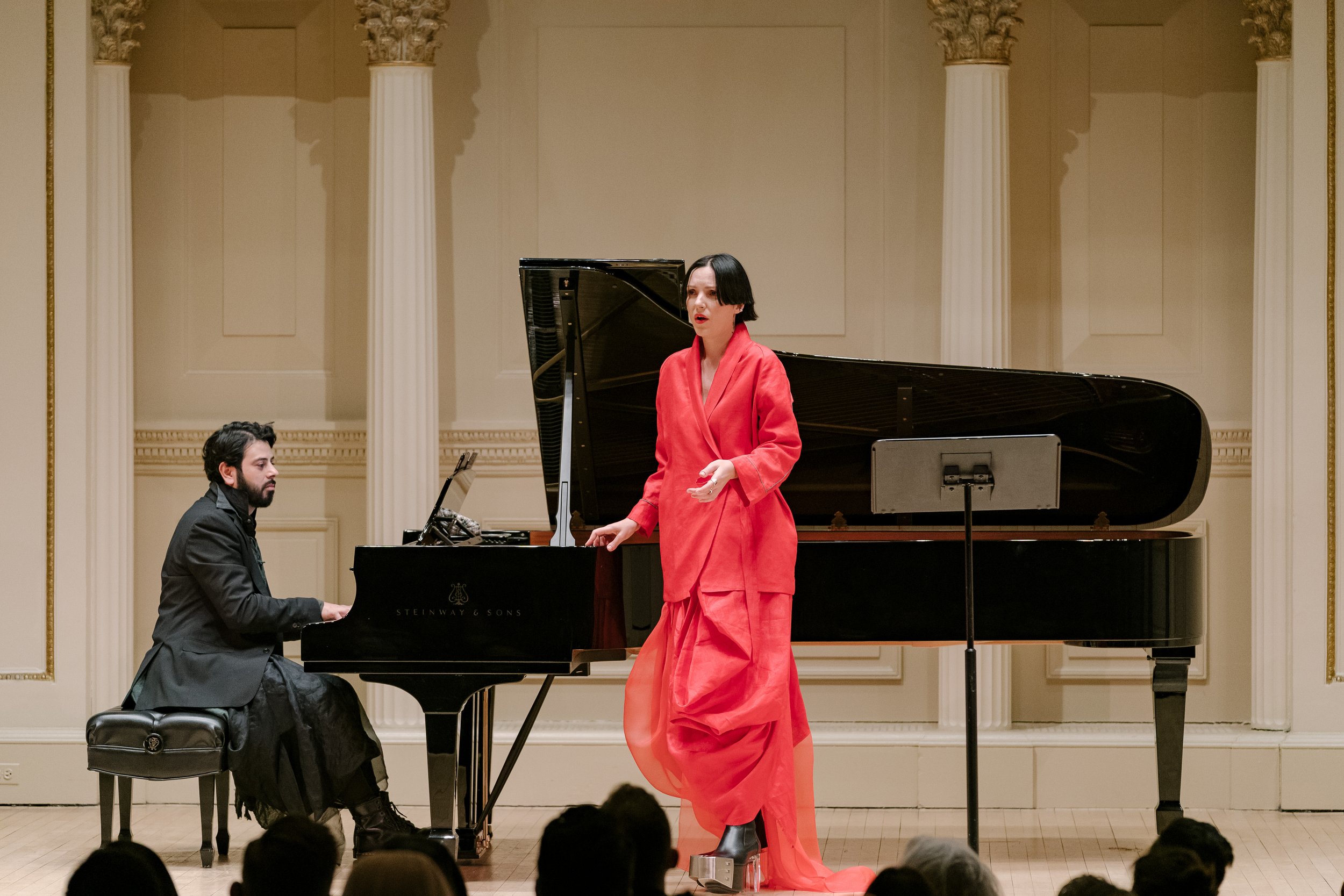
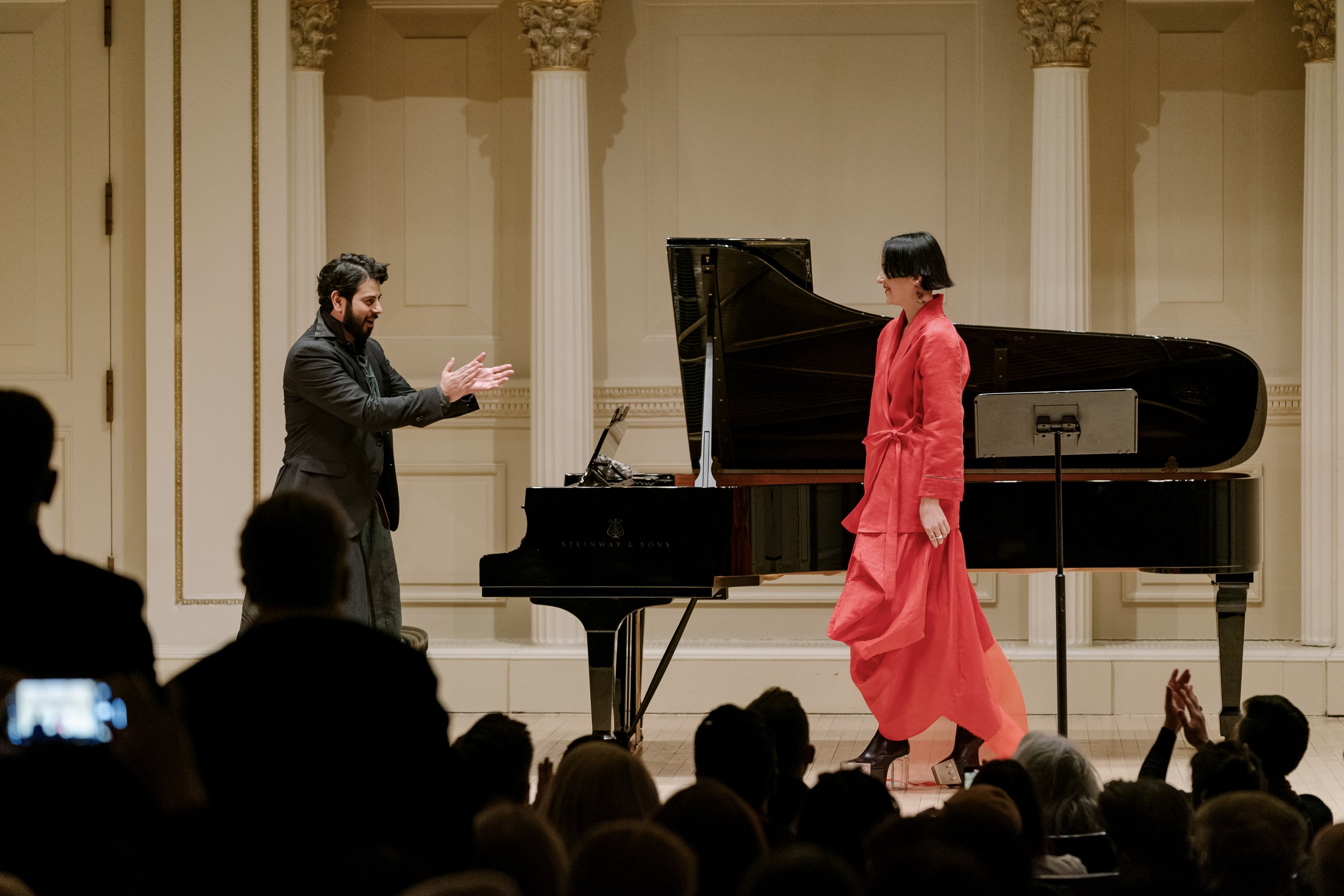
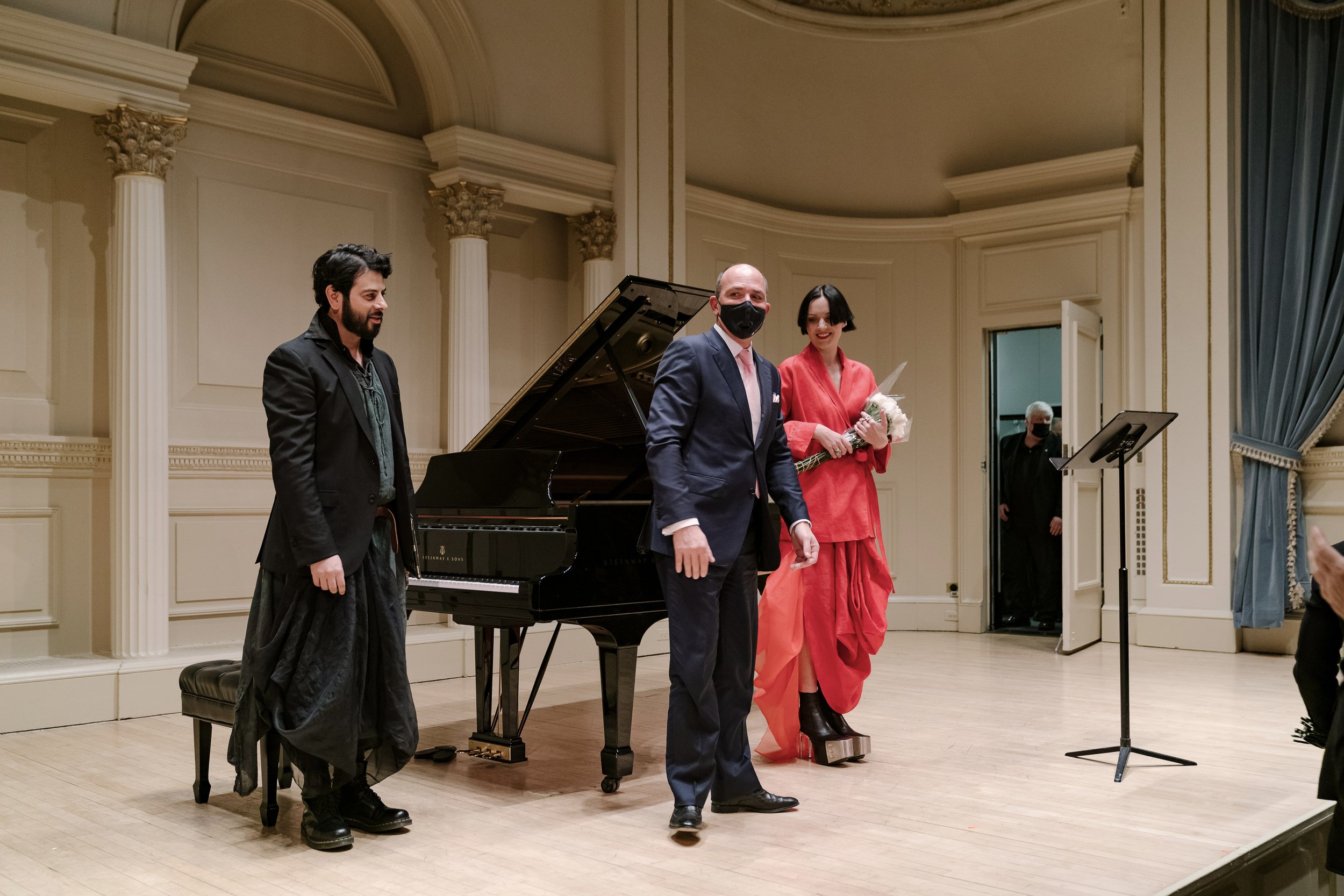
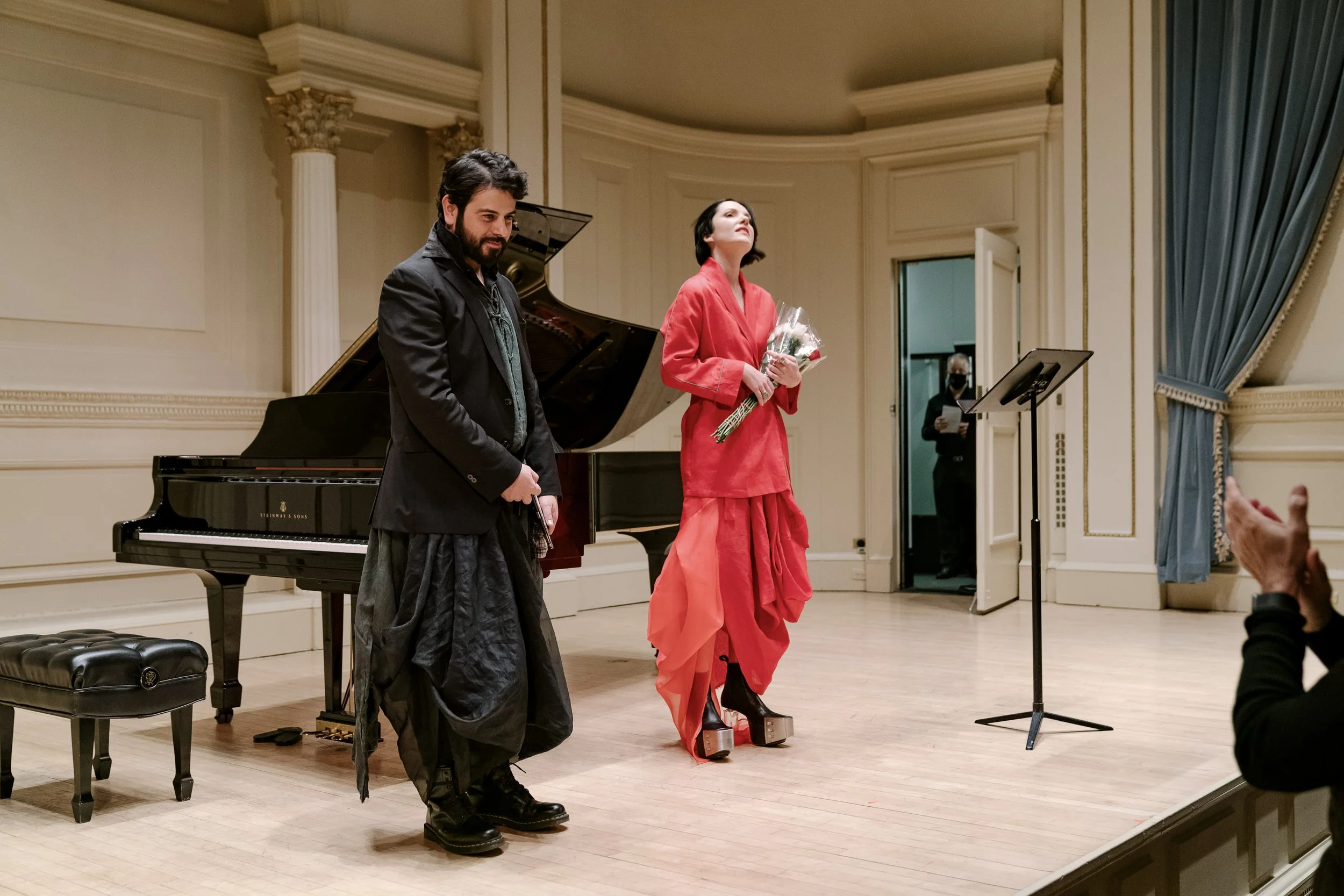
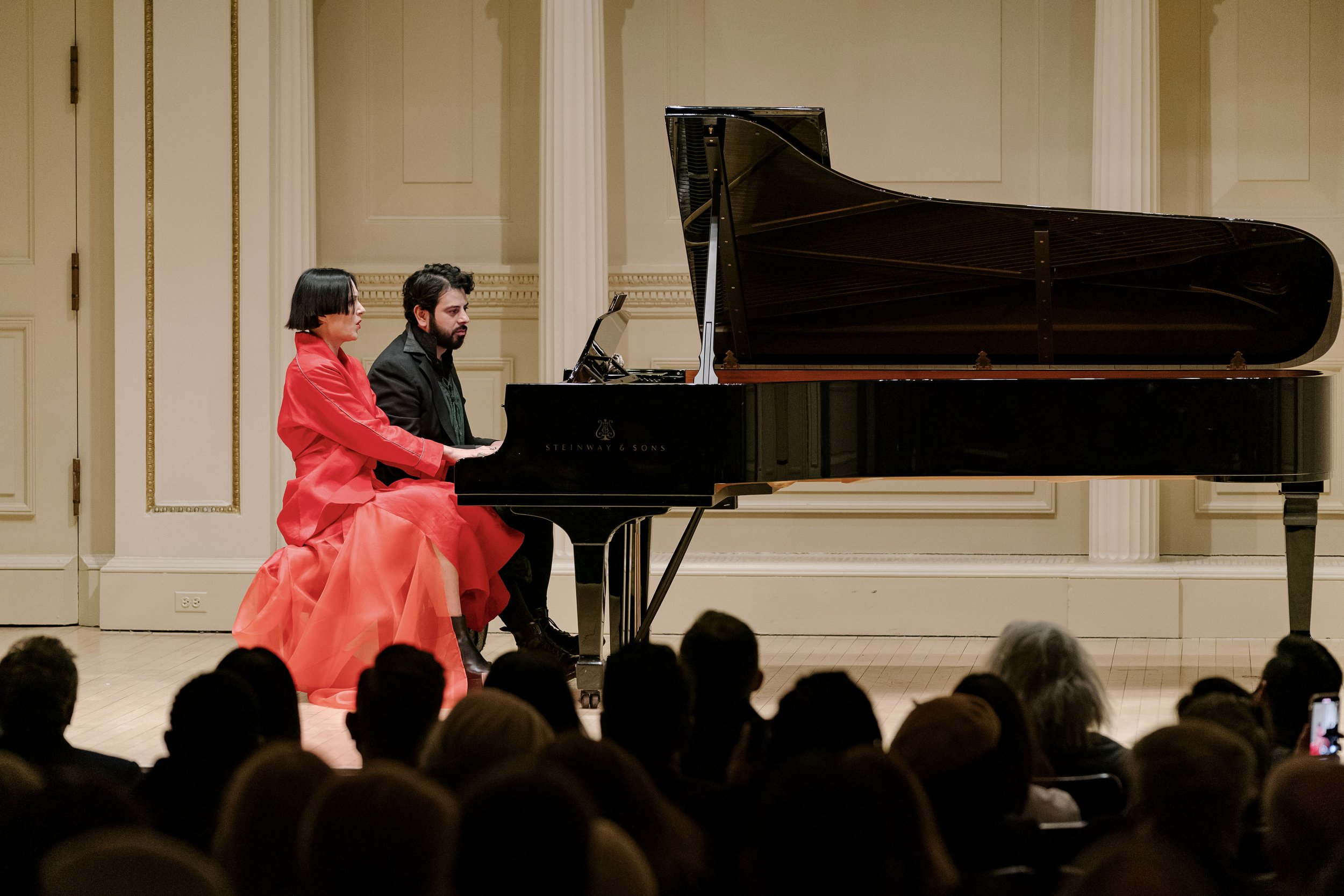
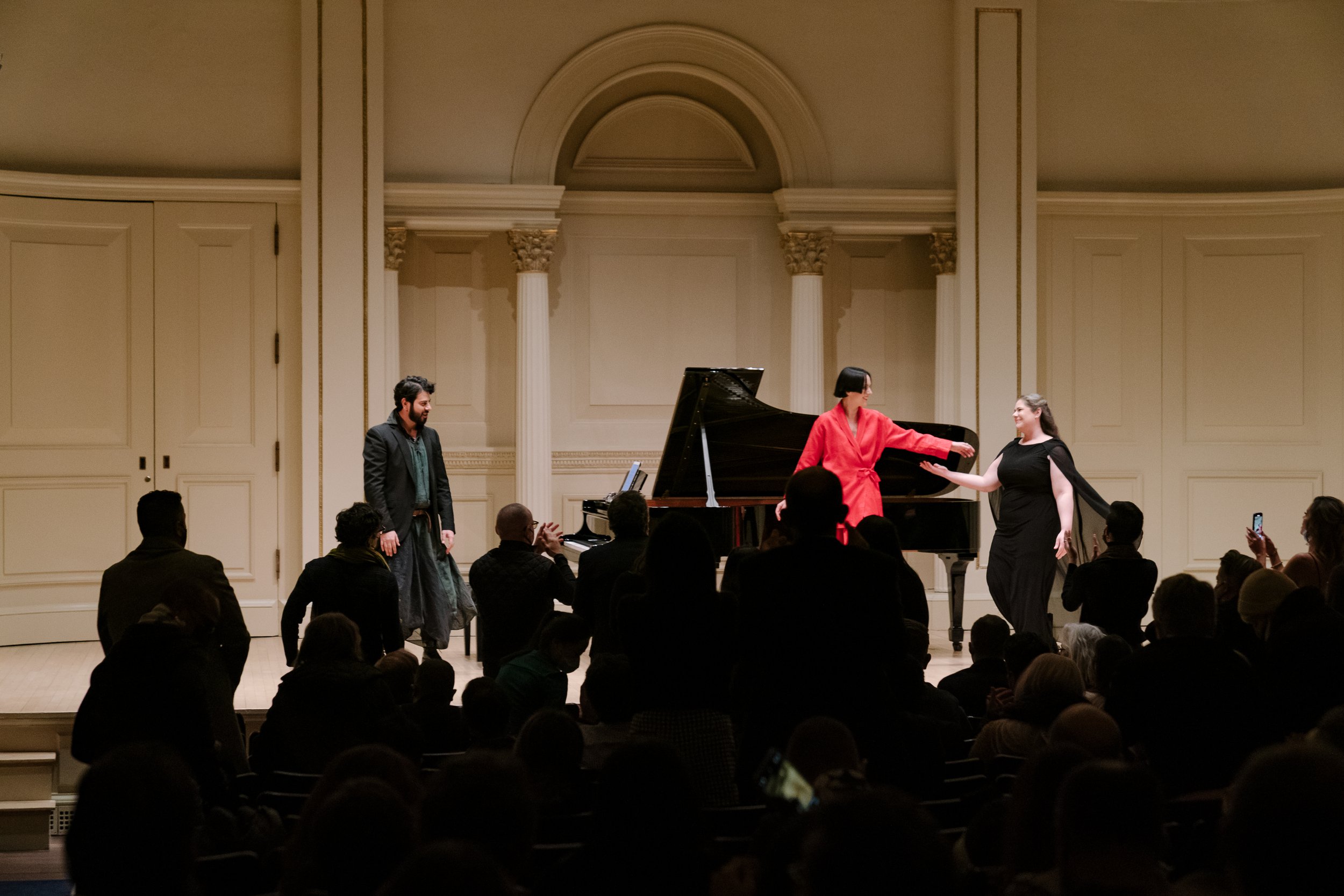
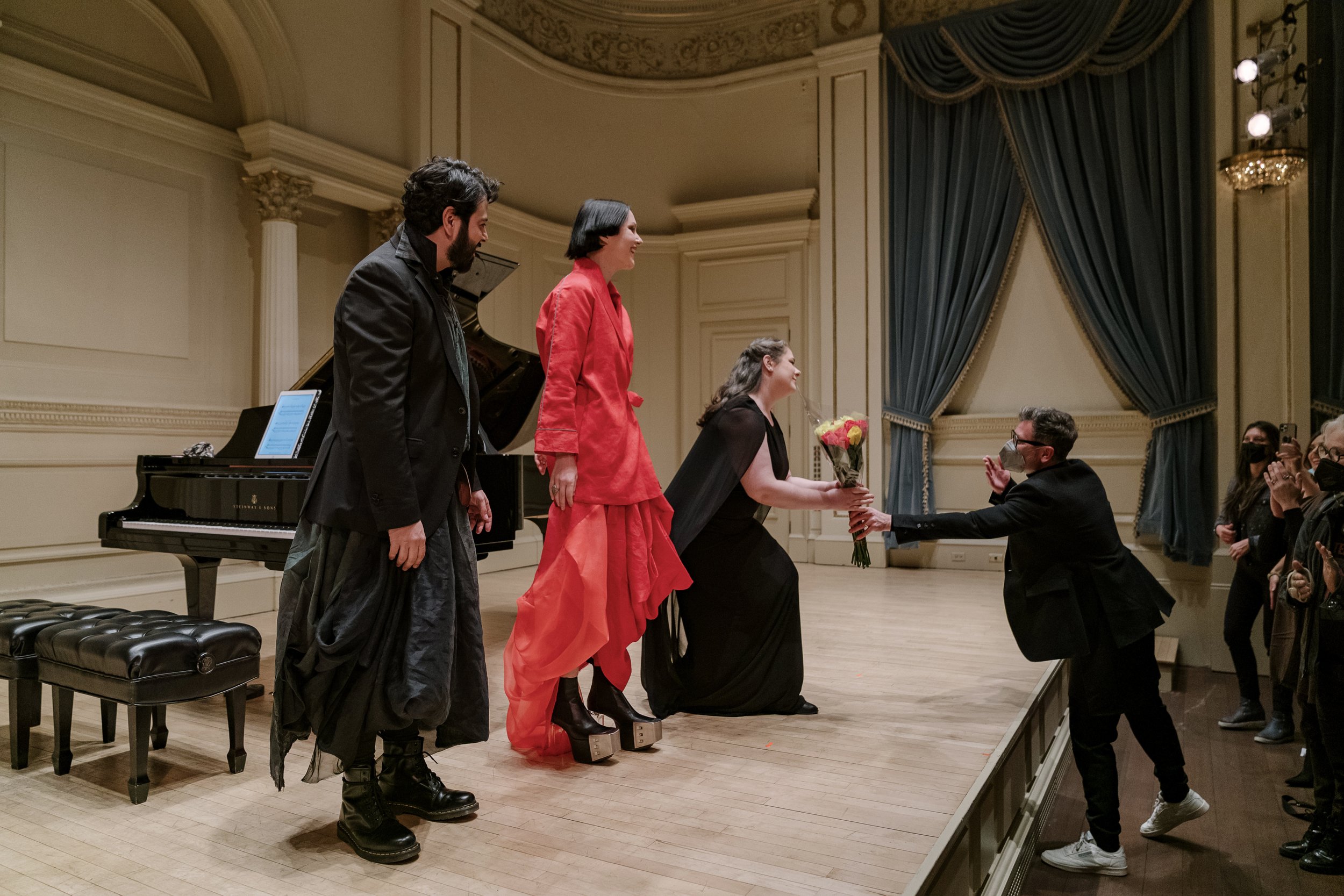
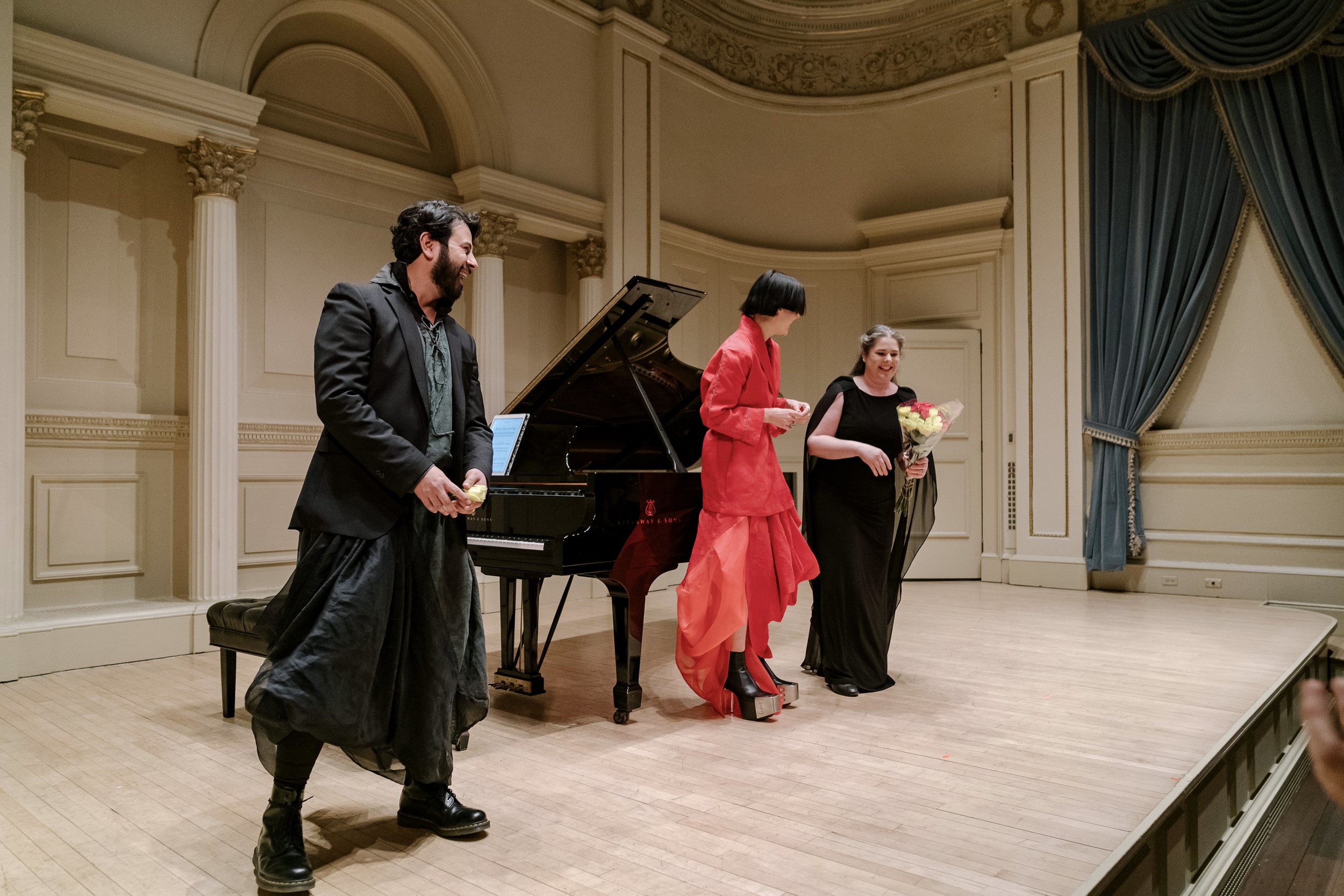
Videos
The Artists
Yana Mann
Photo by Alisa Poturaeva
Yana Mann is an classical trained singer and music producer based on Dubai.
Born in St Petersburg, Russia, Yana began her music studies at a very young age immersing herself in the world of classical music, fine art and theater. She completed her studies at the St. Petersburg Rimsky-Korsakov College of Music under Maestro Pyotr Skusnichenko and graduated from the Tchaikovsky Academic Music College at the Moscow State Conservatory under Olga Mironova. Later, she studied at the Russian Academy of Theater Arts and Academy of Young Singers at the Mariinsky Theater.
During her time in St. Petersburg, Yana worked and performed on many stages, including the Mariinsky Theater and the St. Petersburg Philharmonic. It was during this period that she experimented with different artistic proposals, including fashion and modeling. Although Yana's musical background came from classical music and opera, she has a great interest in exploring new genres and musical architectures. Yana was a member of a heavy metal band and she has also explored the electronic music.
In 2020, with the intention building a more innovative and sustainable 21st century career, and with a clear vision of her music, Yana decided to open her own production company: Silent Theme (named from the jazz tradition), which seeks to generate collaborations globally between artists from all over the world, in the musical (production) and visual (photography and video) fields. After researching and working with different producers and composers, she discovered the music of Julián De La Chica, with which she immediately connected: "his music is austere, clean and modern". For the past year, Silent Theme and De La Chica have come together to produce different content, visual and music, with a new modern discourse within academic and contemporary music.
After her debut album, releasing in May 2021 by IGM label, Yana's popularityhas grown tremendously. Music writer Thomas May states: “For Mann, the achievement is a remarkable solo debut album that demonstrates not only the natural beauty of her voice but the sustained emotional directness with which she deploys it. Mann accentuates the faintest glimmer of hope in these songs detailing loss and absence with such gentle force that the cycle comes to generate a distinctly up-to-date melancholia. " — and Philip Thomas: "Yana eschews the operatic conventions of extreme vibrato and delivers in a voice with a clear, pure tone and perfect diction together with a passion that cannot fail to impress." And recently, after Yana released a single with the iconic Ave Maria, Billboard World Music news wrote: “Yana's voice is pure, dark and calm…”
The works premiered tonight, are categorized less by genre than by the deep levels of thought fulness. The common thread between the "poemas de bar" andthe "Arias florentinas" is that both are intimate confessionals, expressions oflove and longing, loss and regret, artistically matched Mann’s unabashedlyhonest interpretations and strikingly pure lyric mezzo.
Yana is based in Dubai, and splits her time between Dubai and London, where she continues to perfect her singing with acclaimed Soprano Sandra Ford.
Julián De La Chica
Photo by Hassan Malik
Award-winning Colombian artist Julián De La Chica is a composer and video artist based in Brooklyn, NY, whose influences range from minimalism & post-minimalism to the alternative electronic scene. His work is often inspired by everyday images, the search for personal spiritual reflection, and inner darkness. It mixes piano, strings, and classical singers, with electronic keyboards and controllers, crossing over from classical to ambient, post-minimal and electronic music. His music has been recorded by artists around the globe and his discography includes more of 6 solo albums and 14 collaborative projects, some of which have been included by Spotify’s “Classical New Releases” playlist worldwide.











